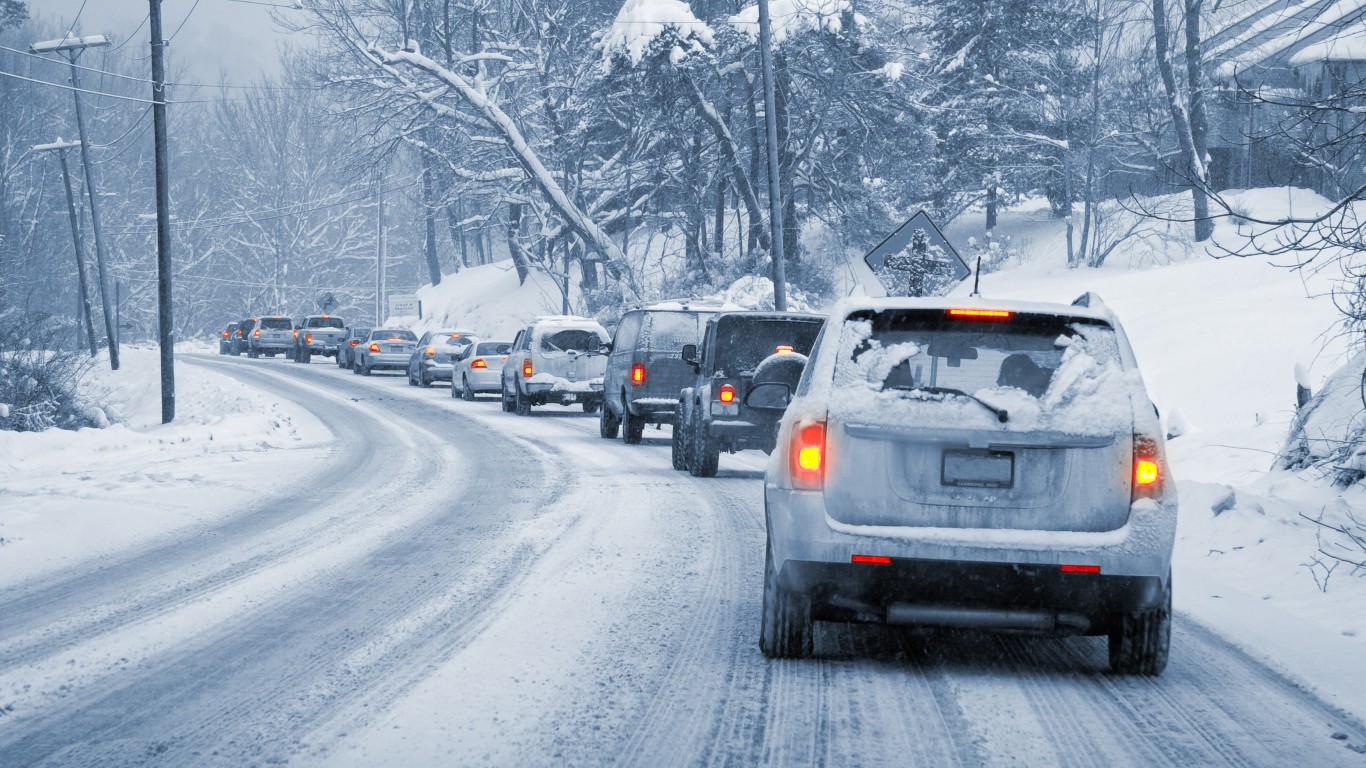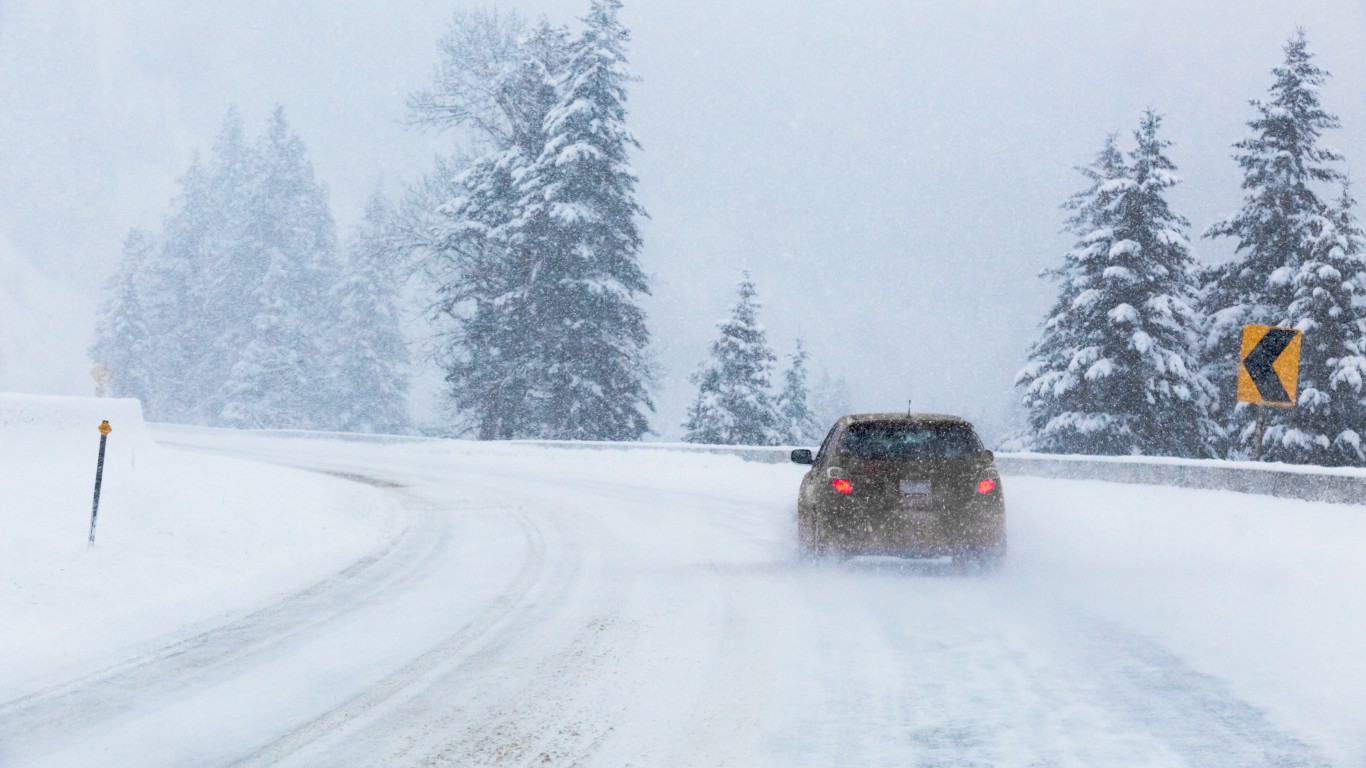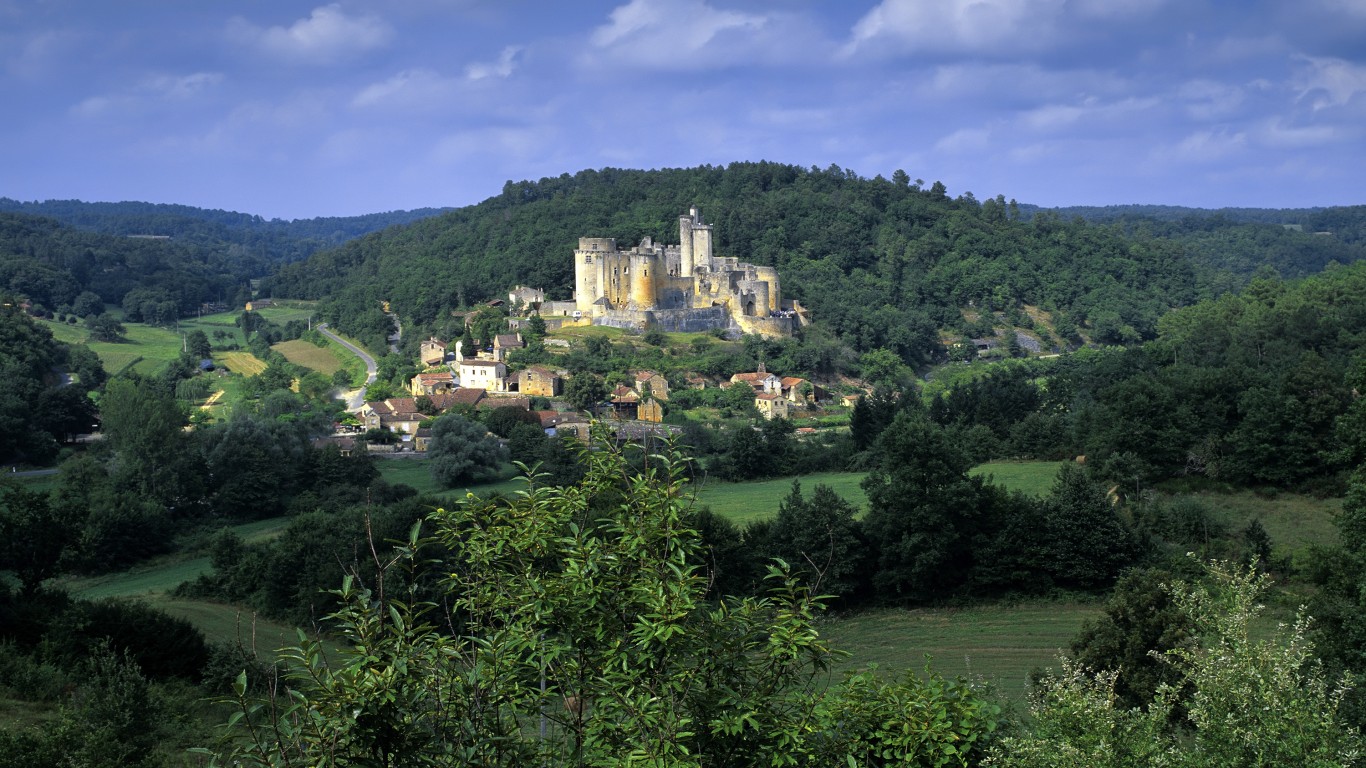
Whether they’re fairy-tale fantasies with slender towers and crenellated walls, impregnable-looking fortresses designed for warfare, or spooky ruins evoking vanished kingdoms, castles are fascinating places. Some are perched on steep cliffs, others are lakeside or built on islands; some are in the flatlands, commanding the countryside. Each has its own kind of beauty, whether it’s delicate or foreboding, complex or simple. (Here are some beautiful places to visit instead of overcrowded tourist destinations.)
A thousand years old or dating from the 20th century, castles are imbued with history, almost by definition. They’ve been home to monarchs and noble families, strategic outposts to defend against invaders, repositories of some of the world’s greatest treasures.
Exactly what constitutes a castle can be debated. It’s something big, to be sure, and was almost always constructed as a residence or retreatfor kings or the nobility. It is usually architecturally distinctive and inevitably built to withstand attack. (They didn’t all live in castles, but these are the 50 most powerful leaders of all time.)
Scholars may argue the difference between castles and fortresses (the latter being generally more strongly fortified), citadels (fortresses usually overlooking a town), châteaux (often — though not always — smaller and less protected than castles or fortresses), and palaces (almost never fortified), but all speak to the past and stir the imagination.
Click here to see Europe’s most beautiful castles
To assemble a list of Europe’s most beautiful castles, 24/7 Tempo consulted numerous travel sites, including Condé Nast Traveler, Travel & Leisure, Historic European Castles, European Best Destinations, Culture Tourist, Travel Channel, and Amazing Places, as well as numerous official regional and national tourism sites from around Europe.
24/7 Tempo has put together an album of images of the most beautiful castles in Europe, covering examples from some 22 countries.
Note that virtually every castle on the list has been renovated and expanded over the centuries and many were destroyed in whole or in part and restored or rebuilt hundreds of years after they first arose. The centuries given are those of the original construction.
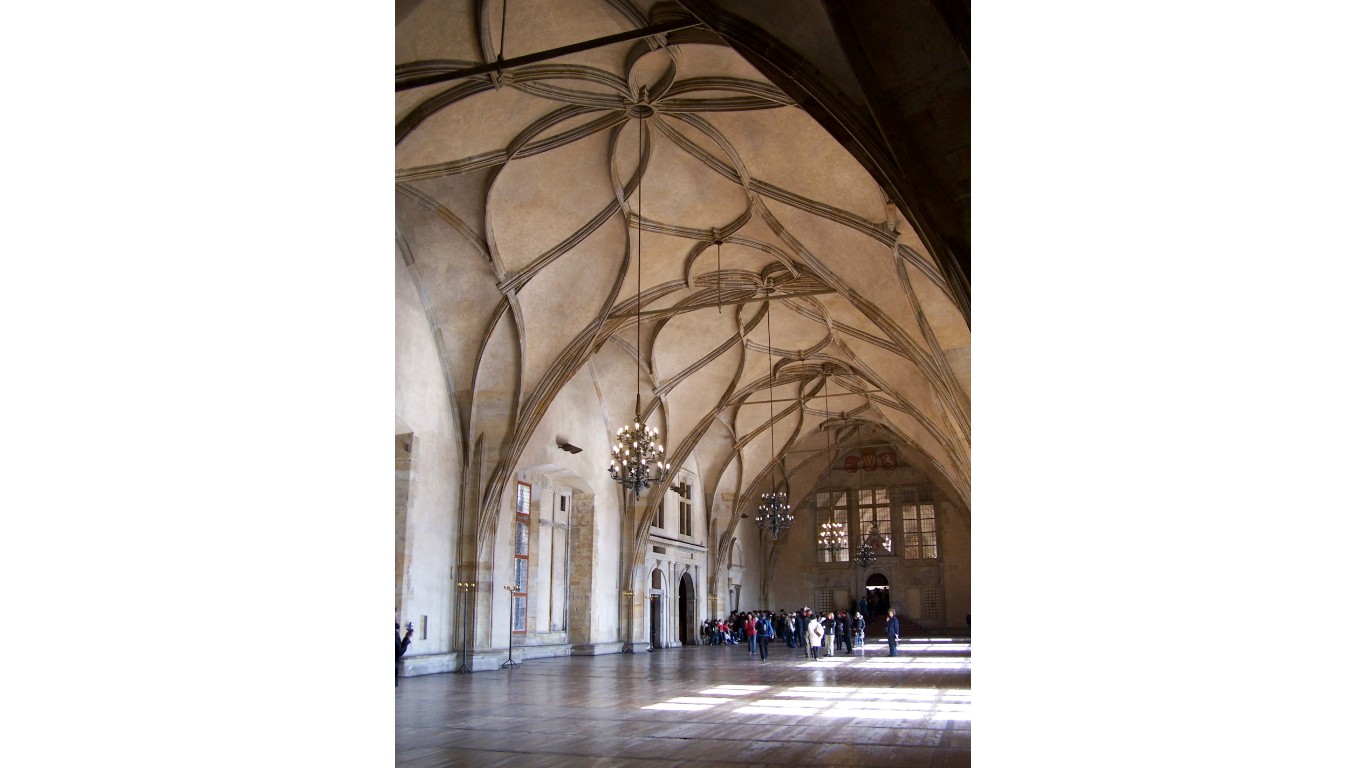
Prague Castle
> Town or region: Prague, Czechia
> Century: 9th
The Guinness Book of World Records identifies this edifice — an irregular polygon covering a total surface area of 18 acres — as “the largest ancient castle in the world.” Today it serves as the office of Czechia’s president.
[in-text-ad]
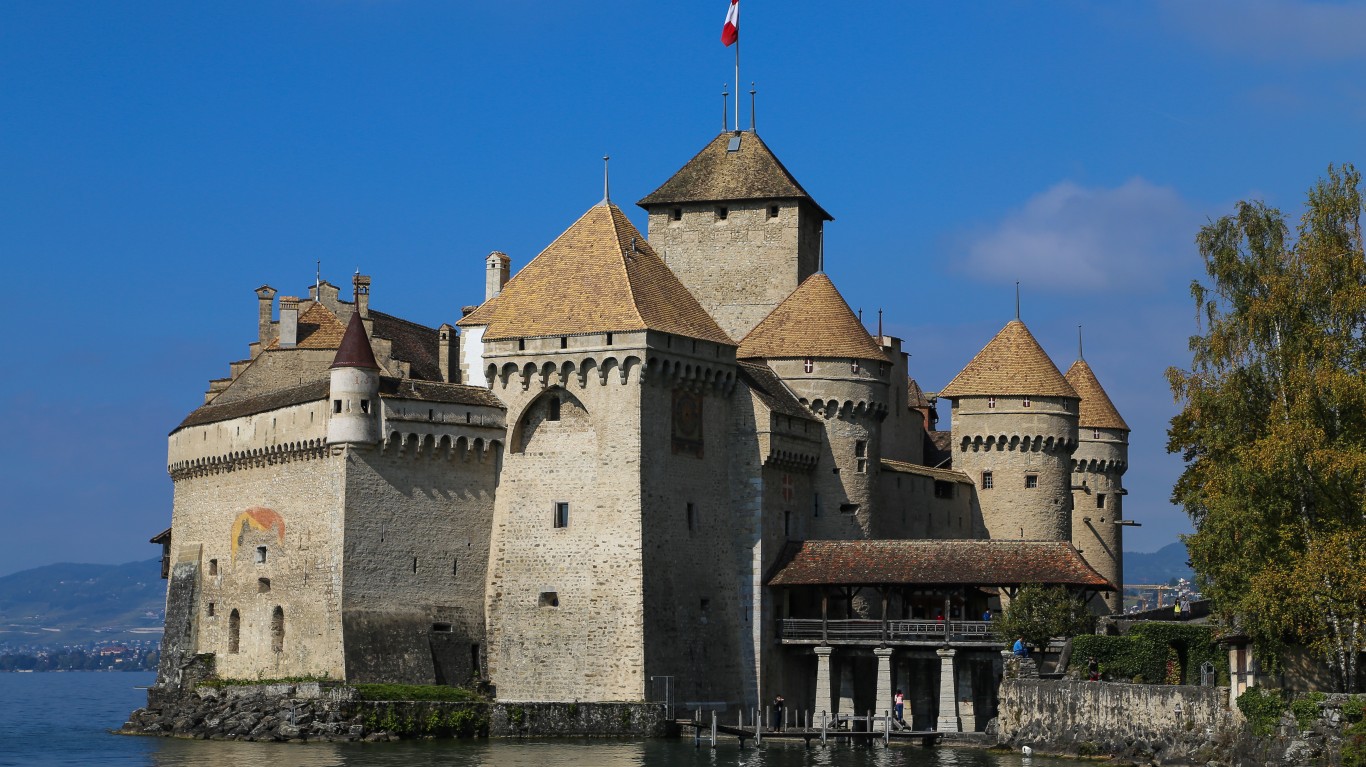
Château de Chillon
> Town or region: Chillon (Lake Geneva), Switzerland
> Century: 10th (?)
This island redoubt, built on the site of a Roman garrison and long occupied by the Counts of Savoy, is one of the most often visited castles in Europe.
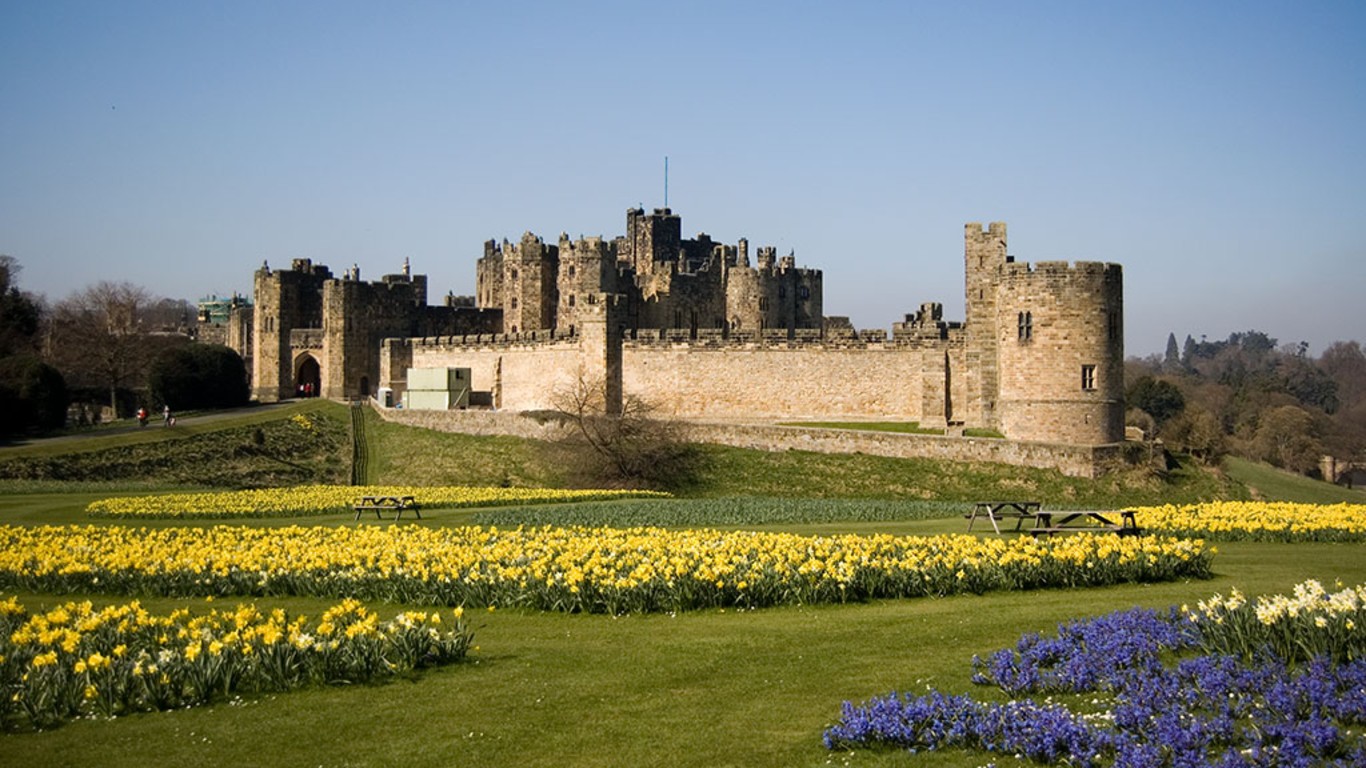
Alnwick Castle
> Town or region: Alnwick, England
> Century: 11th
The UK’s second-largest inhabited castle, dating from Norman times, has not only been home to the Percy family for more than seven centuries but has also served as a teaching college, a military base, and a film set — starring as Harry Potter’s Hogwarts School..
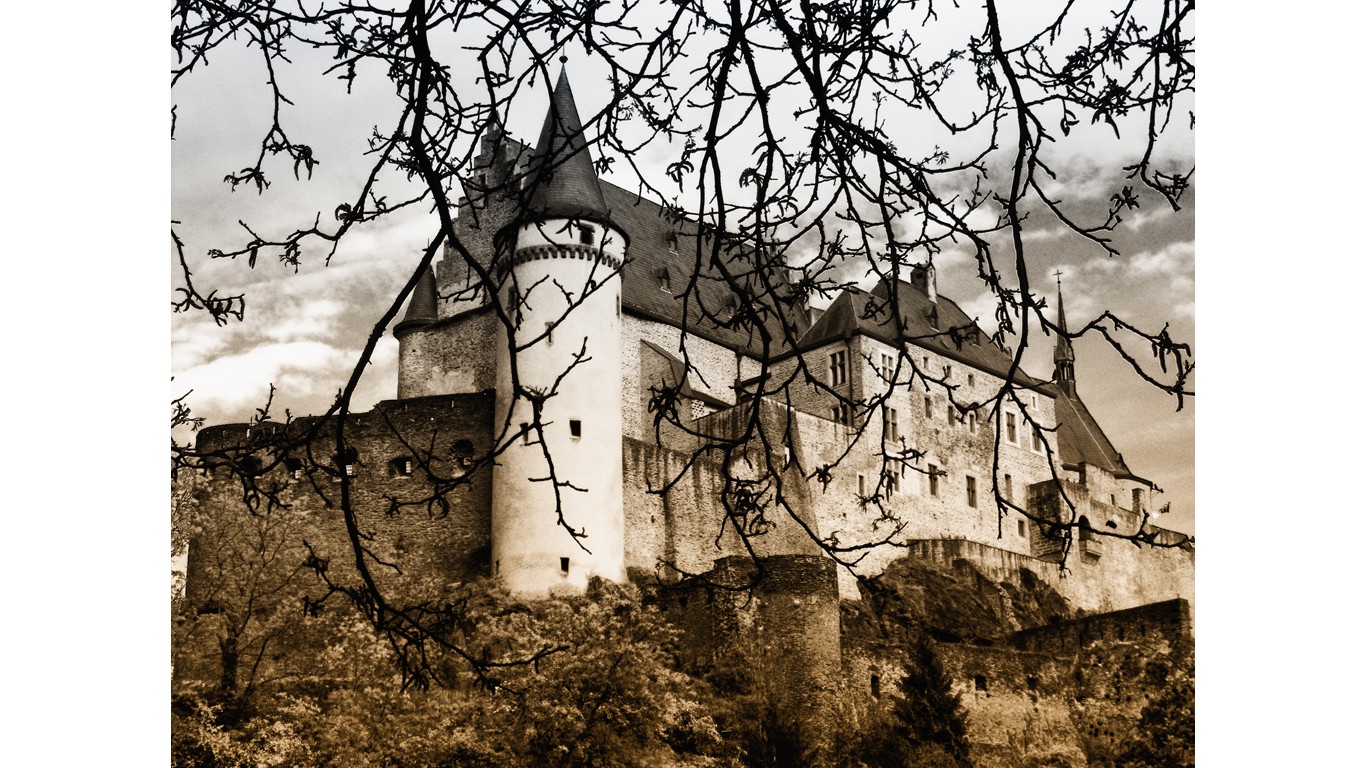
Vianden Castle
> Town or region: Vianden, Luxembourg
> Century: 11th-14th
A Renaissance manse was added to this massive castle west of the Rhine in the 17th century. The whole place later fell into disrepair, but has recently been restored.
[in-text-ad-2]
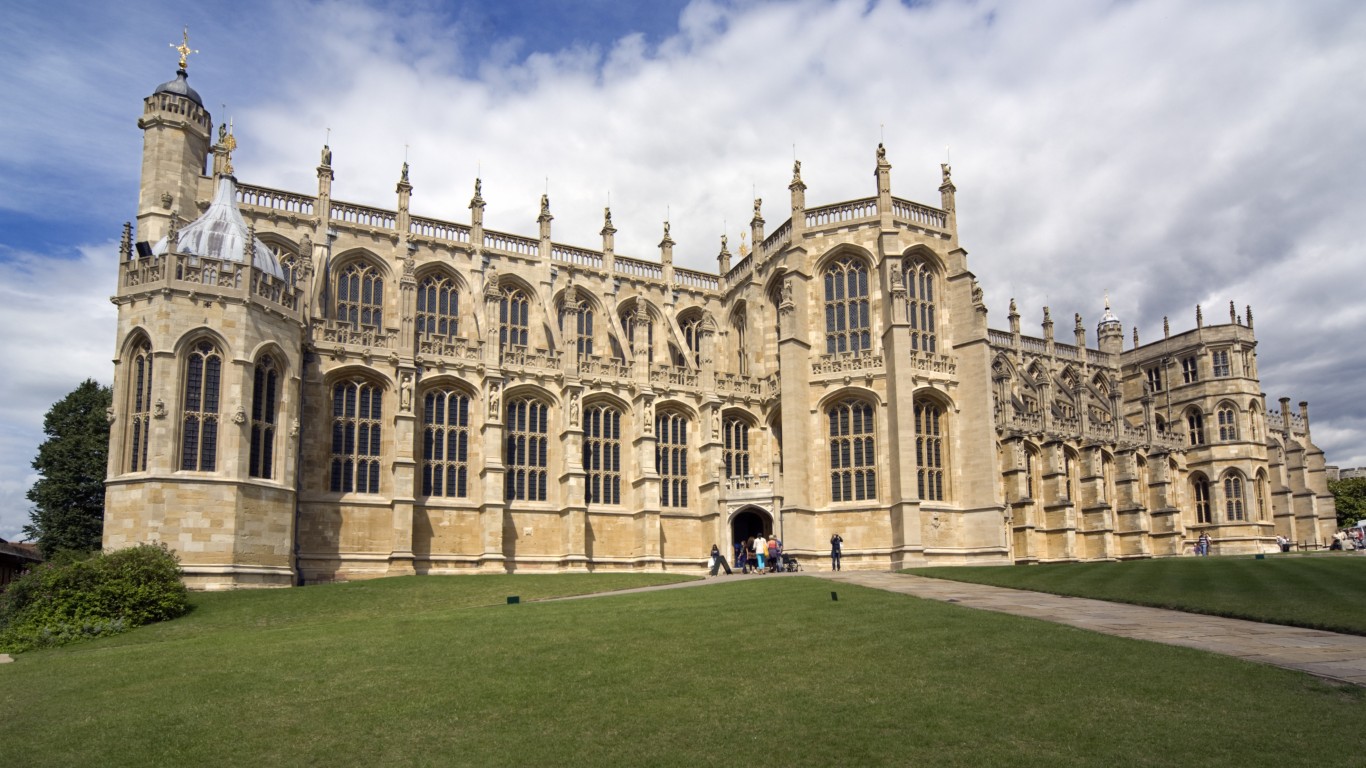
Windsor Castle
> Town or region: Windsor, England
> Century: 11th-19th
No other castle in Europe has been continuously occupied for as long as this seat of the British monarchy. Frequently depicted in paintings and photographs, it is one of the world’s most recognizable castles.
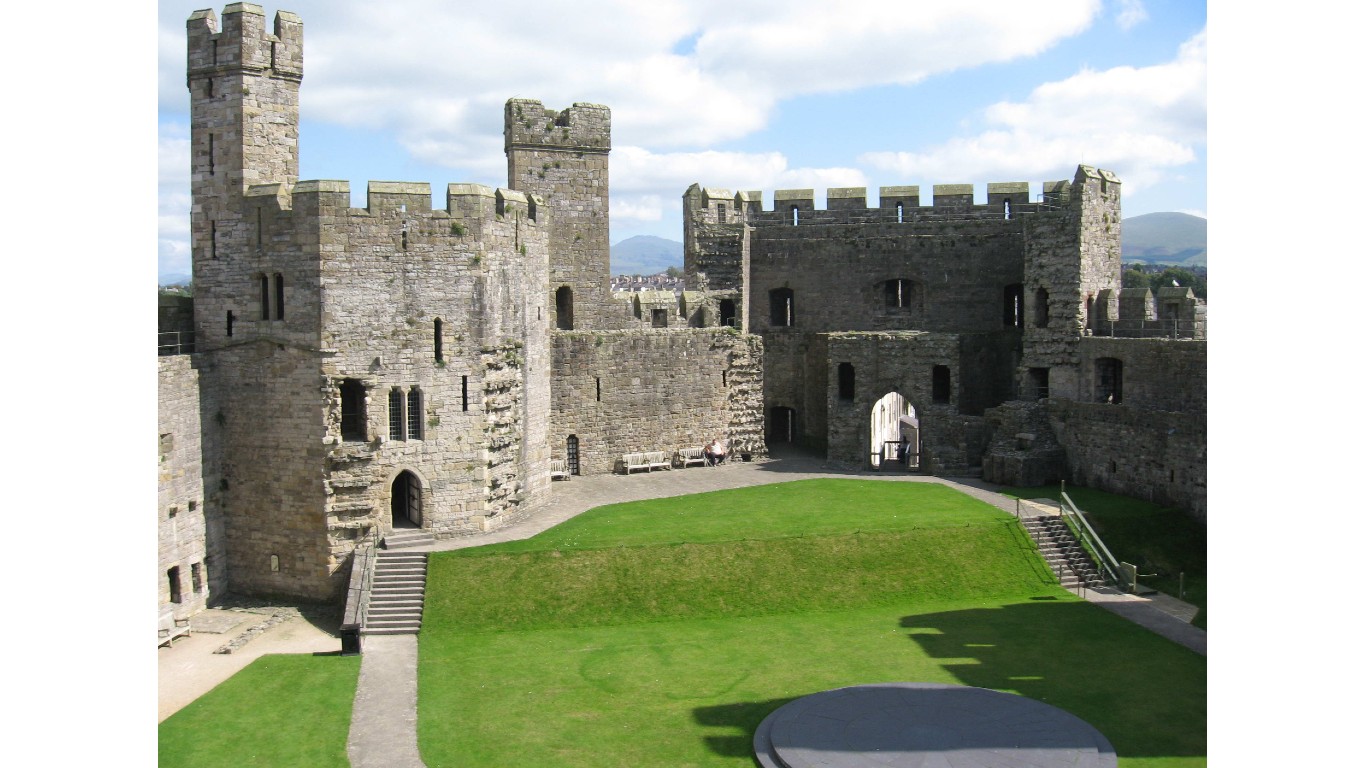
Caernarfon Castle
> Town or region: Caernarfon, Wales
> Century: 12th
This Edwardian-era castle and the adjacent town once served as the administrative capital of northern Wales.
[in-text-ad]
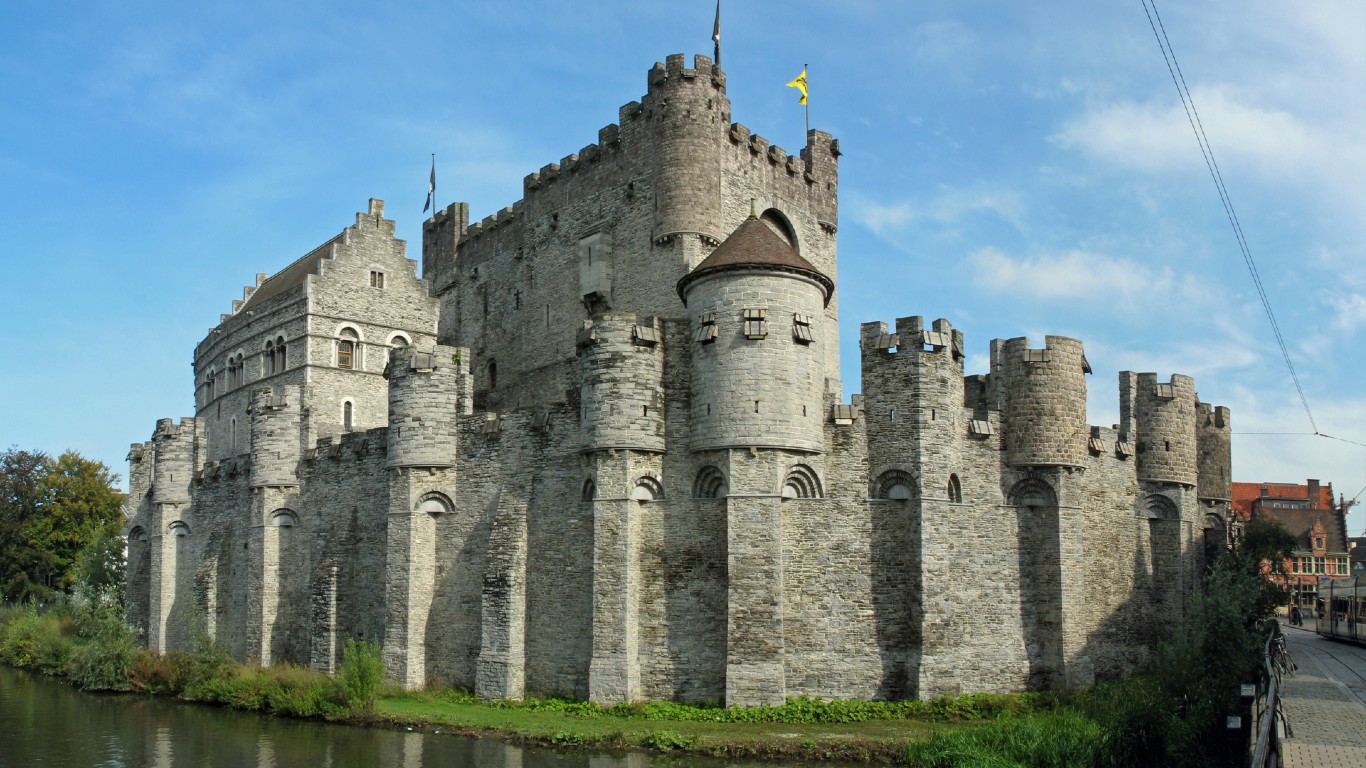
Gravensteen
> Town or region: Ghent, Belgium
> Century: 12th
This medieval stronghold’s name means “Castle of the Counts,” and it was the seat of the Counts of Flanders from its construction through 1353.
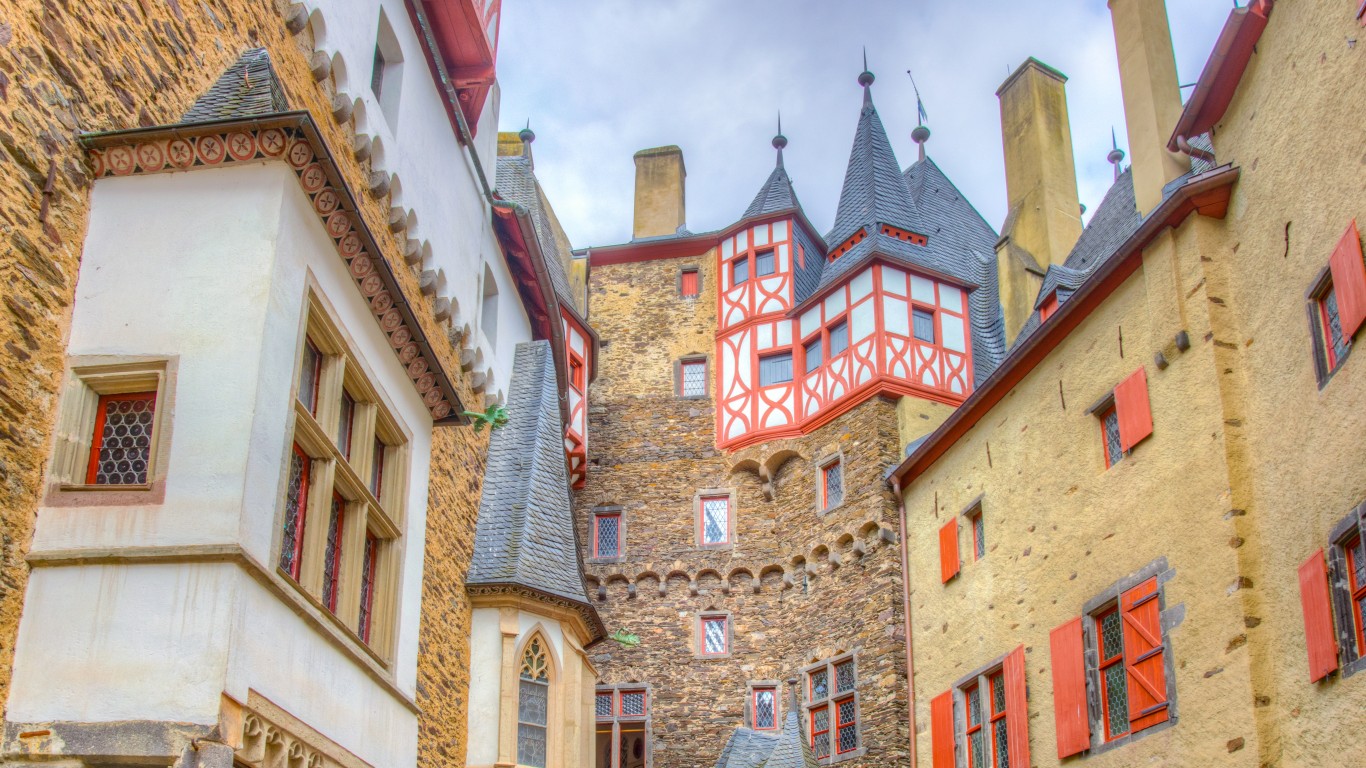
Eltz Castle
> Town or region: Wierschem, Germany
> Century: 12th
Though it dates from the 1100s, this soaring structure began life as a mere manor house in the ninth century. A branch of the founding Eltz family still resides here.
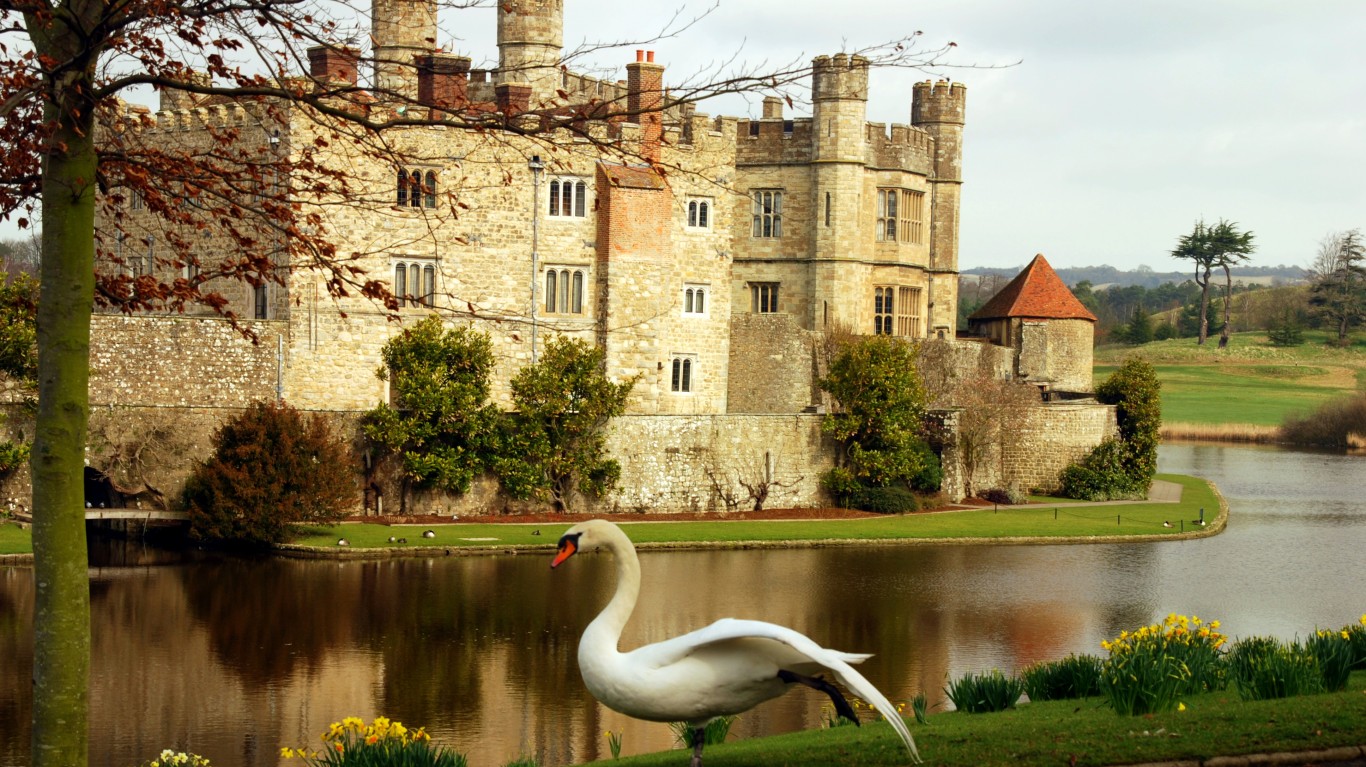
Leeds Castle
> Town or region: Maidstone (Kent), England
> Century: 12th
Catherine of Aragon, the first wife of Henry VIII, lived in this castle in the 16th century. While portions of the 12th-century original remain, most of the complex now dates only from the 1800s.
[in-text-ad-2]
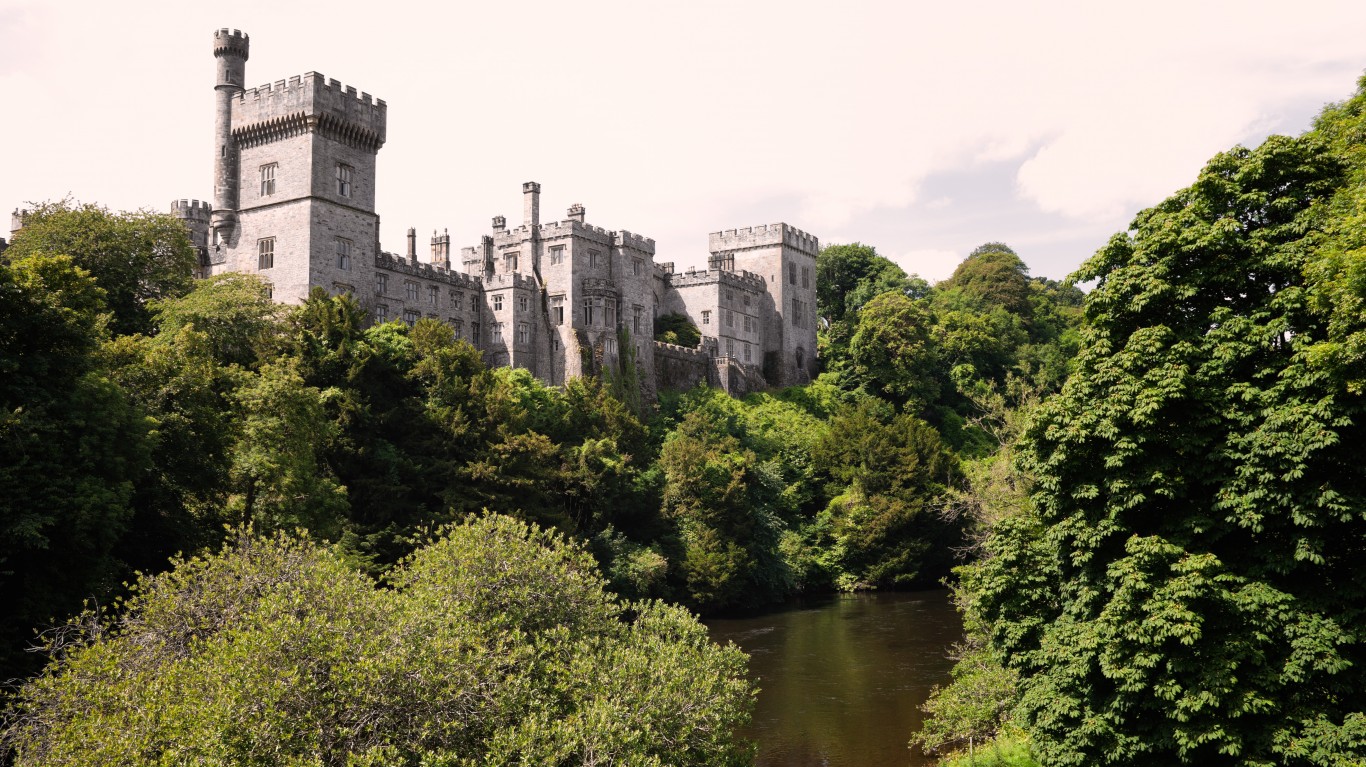
Lismore Castle
> Town or region: Lismore, Ireland
> Century: 12th
Built in 1185 on the site of Lismore Abbey, this castle today is the Irish residence of England’s Duke of Devonshire. Much of it was rebuilt in the mid-19th century.
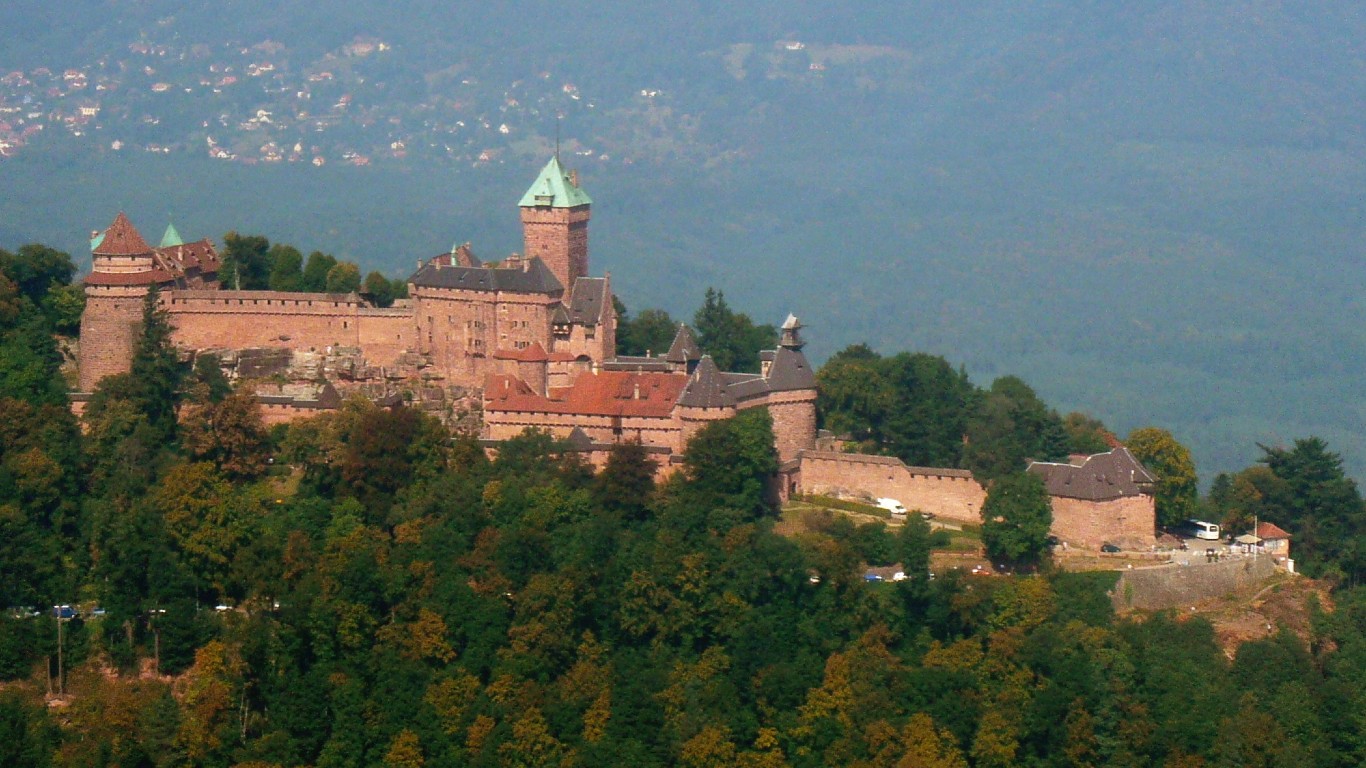
Château du Haut-Königsbourg
> Town or region: Orschwiller, France
> Century: 12th (?)
This castle, perched on a steep cliff in the Vosges Mountains, fell into decay in the 17th century, and was rebuilt early in the 1900s under Kaiser Wilhelm II.
[in-text-ad]
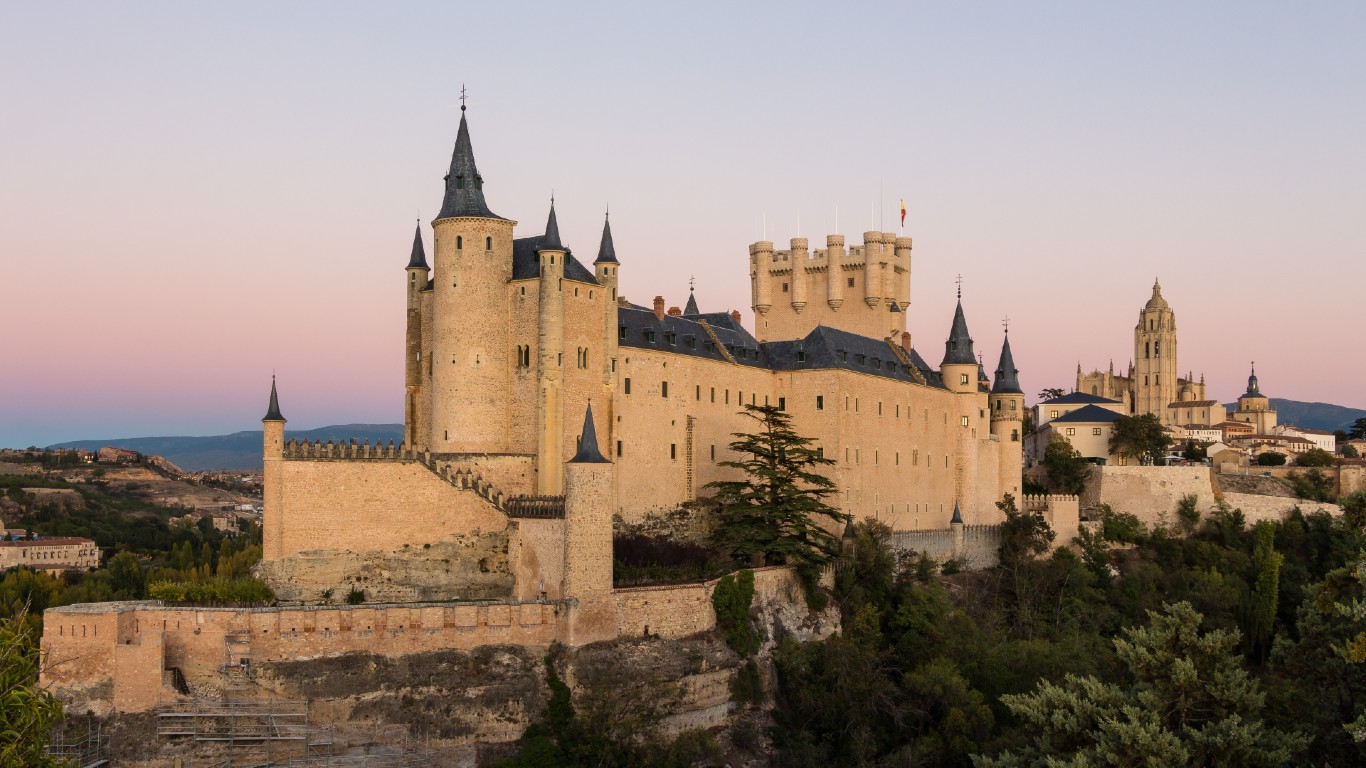
Alcázar of Segovia
> Town or region: Segovia, Spain
> Century: 12th-13th
An alcázar is a fortress. This one — a UNESCO World Heritage Site — in the ancient city of Segovia was built to resemble the bow of a gigantic ship.
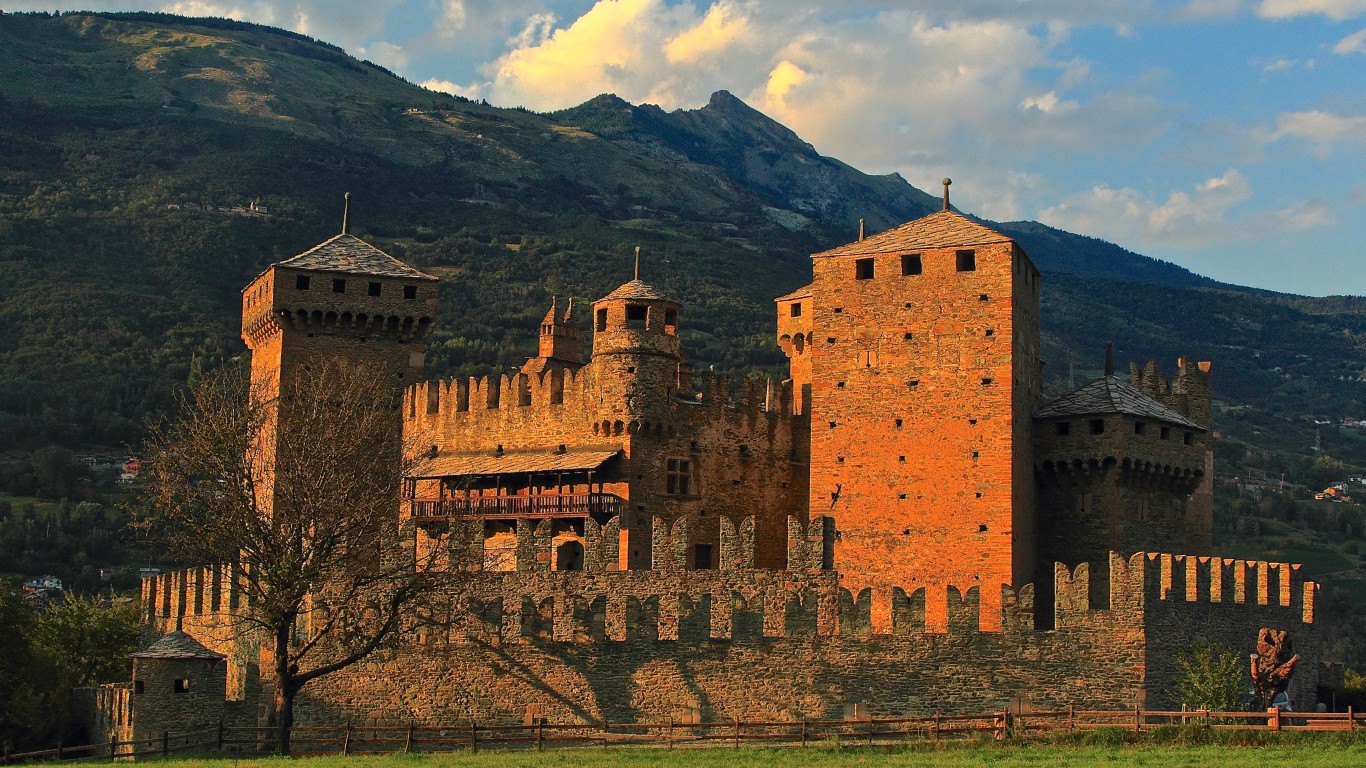
Fénis Castle
> Town or region: Fénis (Aosta Valley), Italy
> Century: 12th-14th
Located in the mountainous Italian region of Val d’Aosta, abutting the French border, this castle was restored in the early 20th century.
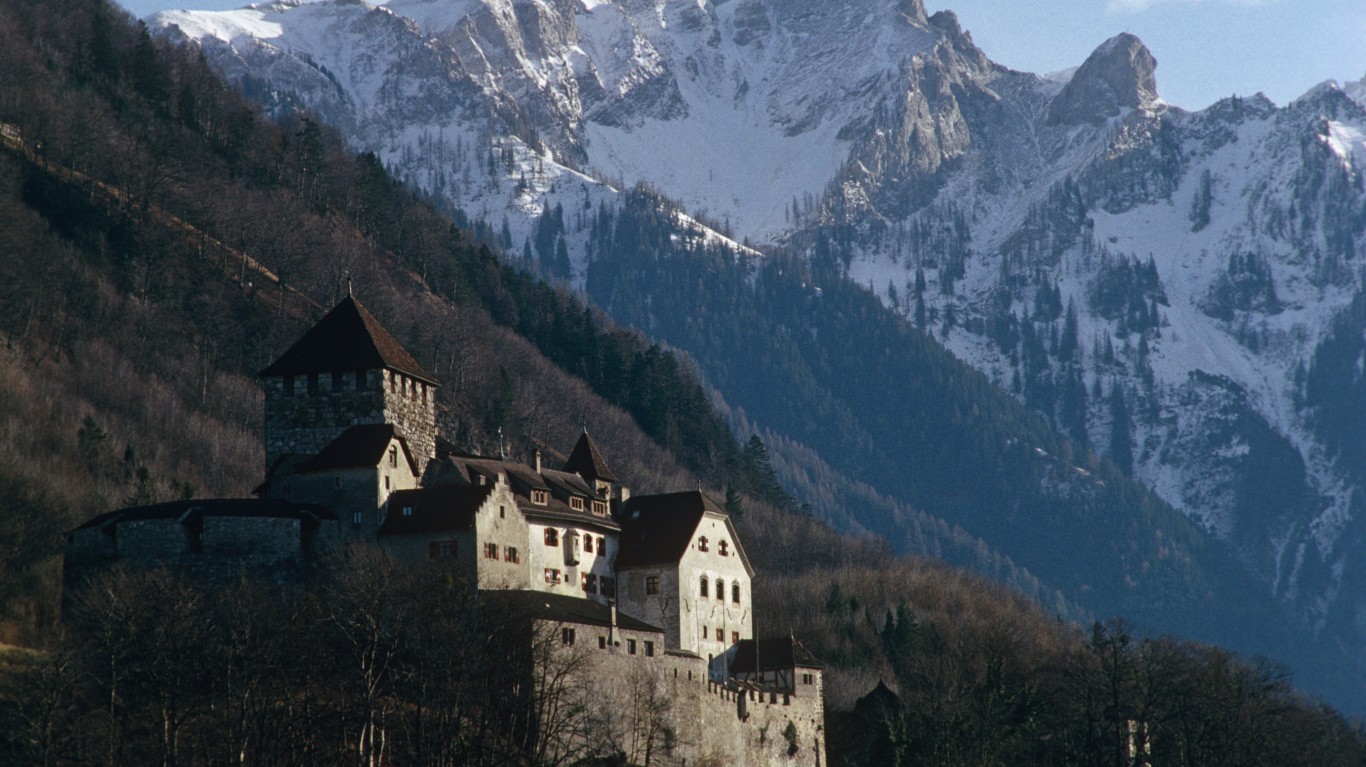
Schloss Vaduz
> Town or region: Vaduz, Liechtenstein
> Century: 12th-17th
Perched high above the capital of this tiny principality, Schloss Vaduz is the residence of Liechtenstein’s prince and his family. Built in stages over many centuries, it underwent major restorations and expansions in the 20th century.
[in-text-ad-2]
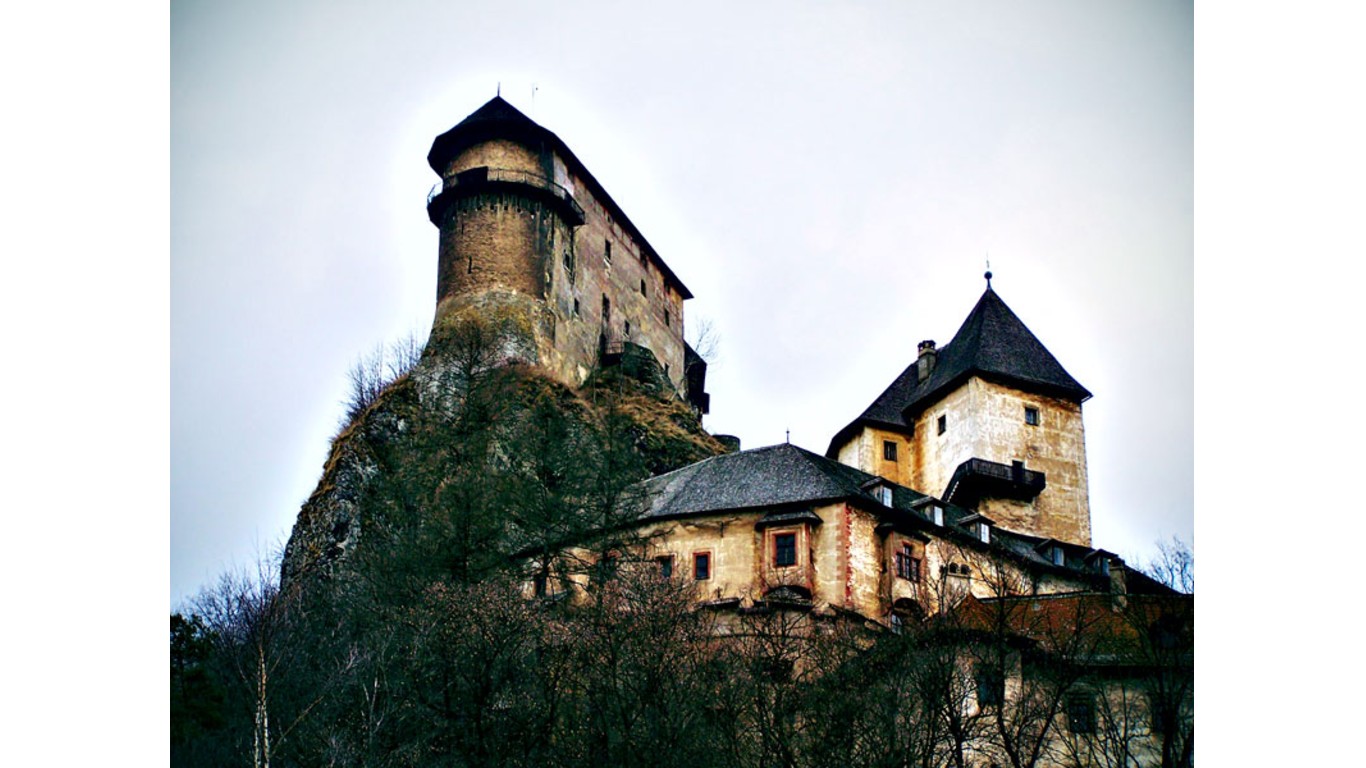
Orava Castle
> Town or region: Oravský Podzámok, Slovakia
> Century: 13th
The original castle on this site was a wooden fort, evolving into a stone castle in later centuries. Restored after a fire in 1800, it served as a setting for the legendary silent film “Nosferatu,” F.W. Murnau’s retelling of the Dracula story.
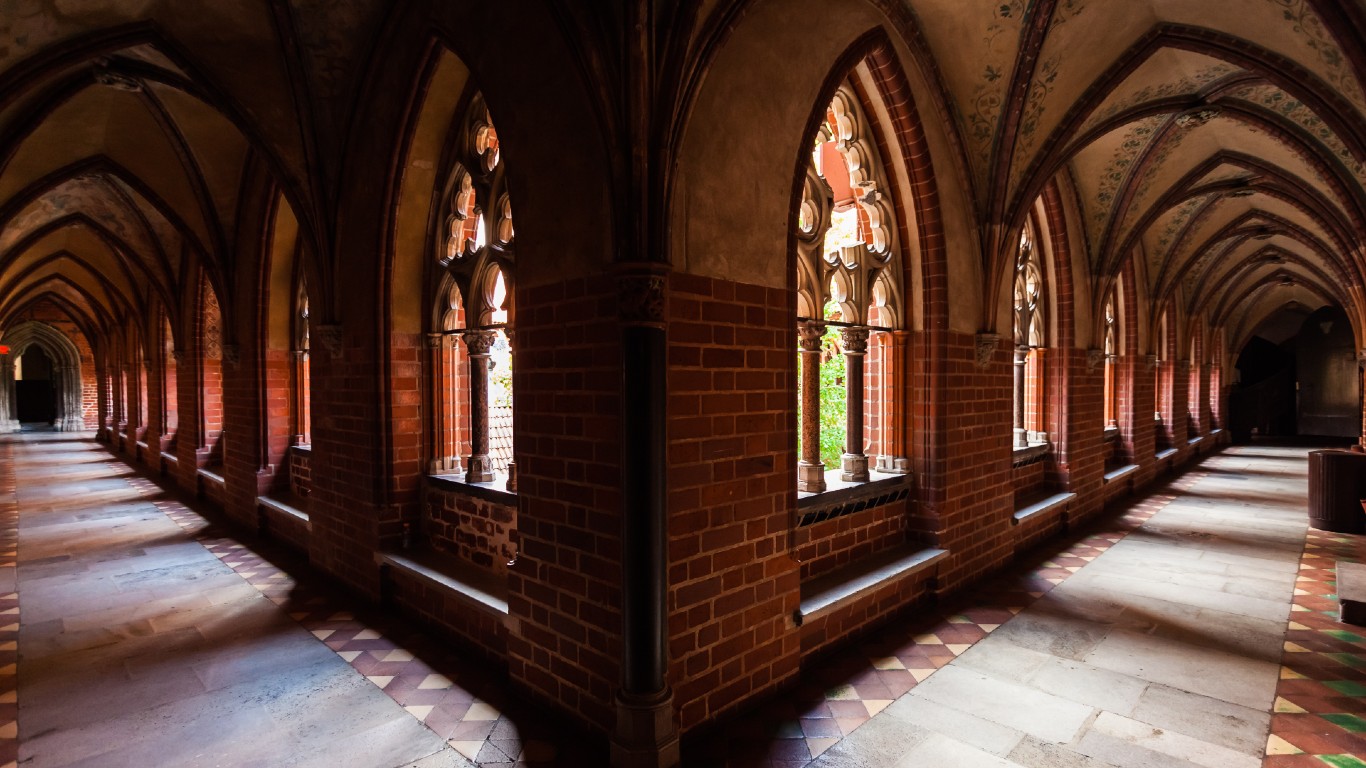
Malbork Castle
> Town or region: Malbork, Poland
> Century: 13th
This UNESCO World Heritage Site, built by the Teutonic Knights, is the world’s largest castle in terms of area covered.
[in-text-ad]
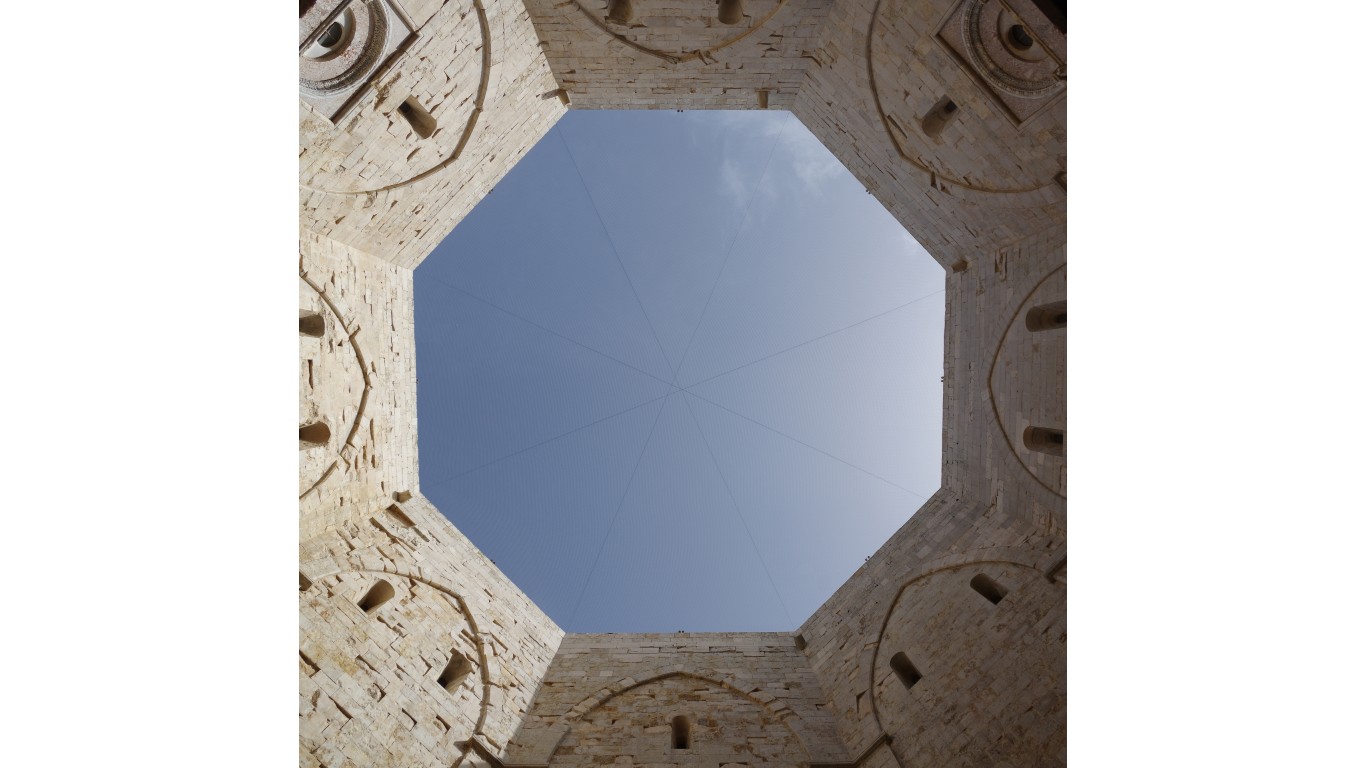
Castel del Monte
> Town or region: Andria, Italy
> Century: 13th
This hilltop castle, built by Emperor Frederick II, is comparatively small by castle standards, but is a UNESCO World Heritage Site and appears on the Italian minting of the one-cent Euro coin.
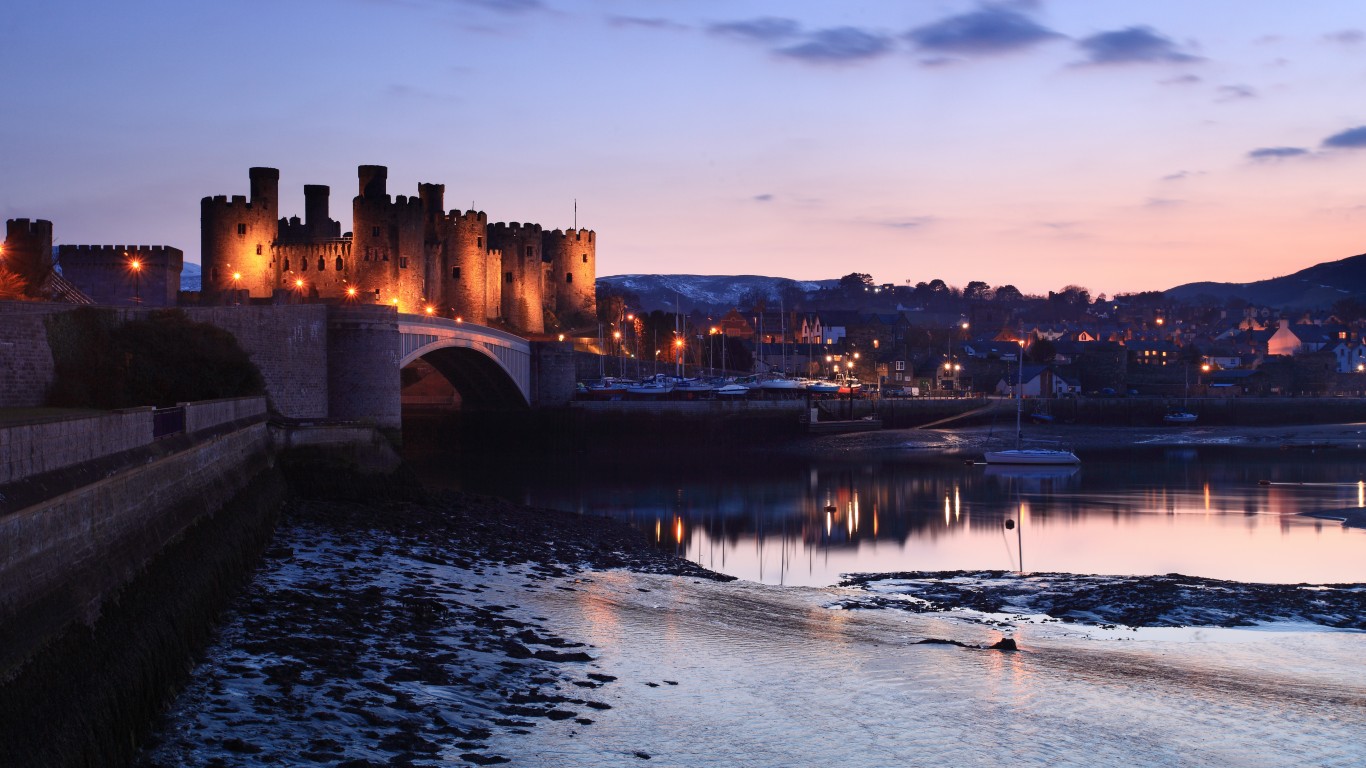
Conwy Castle
> Town or region: Conwy, Wales
> Century: 13th
In classifying it as a World Heritage Site, UNESCO described this impregnable-looking castle as among “”the finest examples of late 13th century and early 14th century military architecture in Europe.”
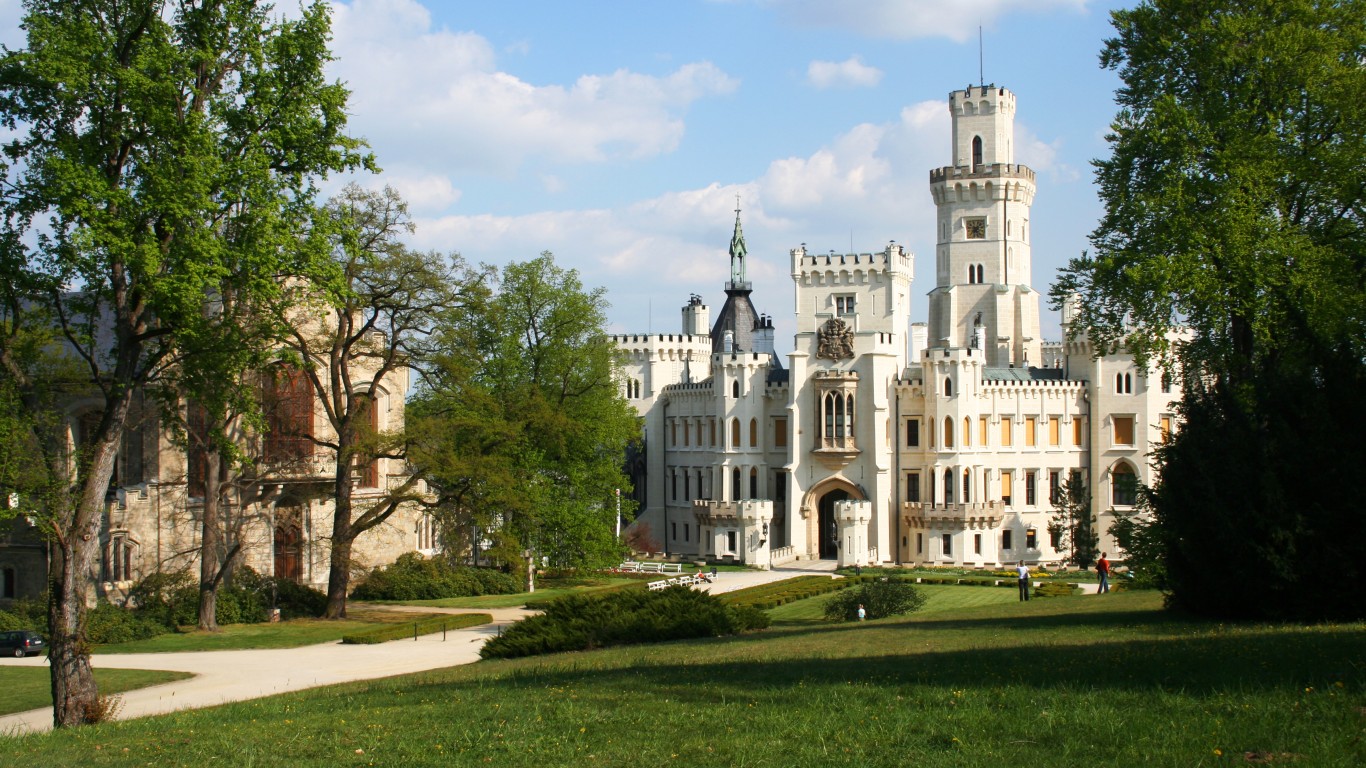
Hluboká Castle
> Town or region: Hluboká, Czechia
> Century: 13th
Originally Gothic in style, this castle was refashioned several times over the centuries in different architectural styles. Its present-day exterior was modeled after that of Windsor Castle (see above).
[in-text-ad-2]
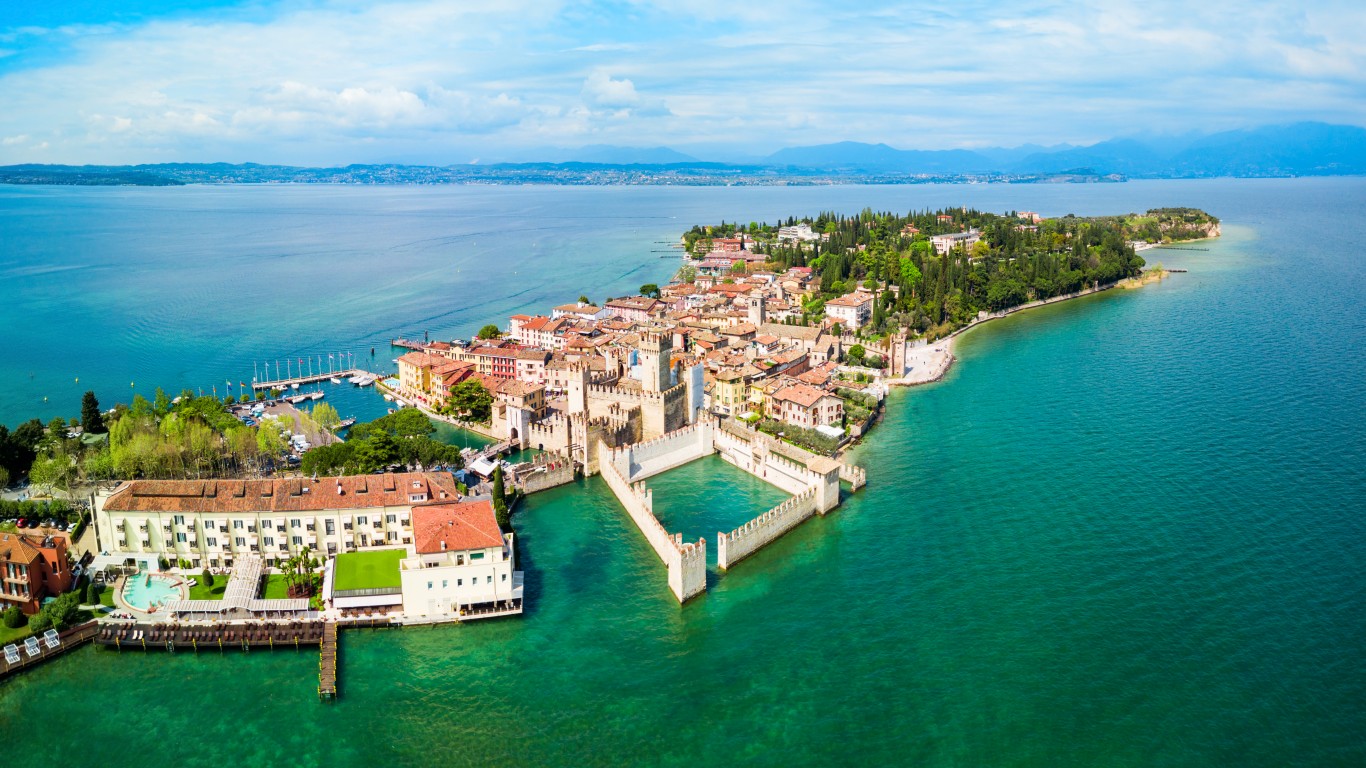
Scaligero Castle
> Town or region: Sirmione (Lake Garda), Italy
> Century: 13th
One of the most popular castles in Italy among visitors, and one of the best preserved, this medieval fortress on the banks of Lake Garda was built by the Della Scala family, rulers of nearby Verona and its region.
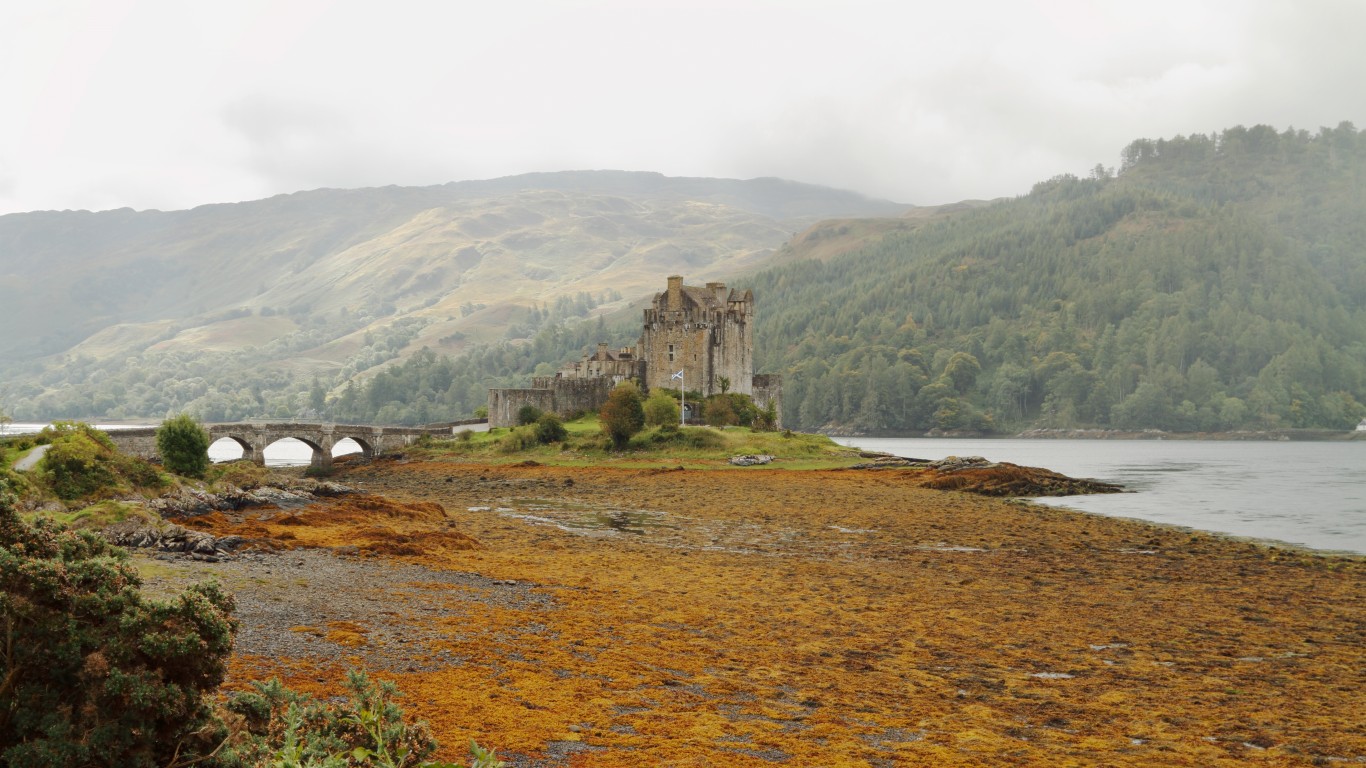
Eilean Donan Castle
> Town or region: Eilean Donan, Scotland
> Century: 13th (rebuilt 20th)
Countless movies have been filmed at this romantic island castle in Scotland’s Highlands. The original structure was destroyed during the Jacobite Rebellion in the 18th century. The 20th-century reconstruction is considerably more ornate than the 13th-century version.
[in-text-ad]

Château de Bonaguil
> Town or region: Saint-Front-sur Lémance, France
> Century: 13th (rebuilt late 15th-early 16th)
A massive fortress on a rocky cliff in southwestern France, this edifice is considered a masterpiece of medieval military architecture.

Alhambra
> Town or region: Granada, Spain
> Century: 13th-14th
One of the last Moorish castles built in Spain, the Alhambra — today a UNESCO World Heritage Site and major tourist attraction — was the site of the Spanish royal court in 1492, and it was here that Ferdinand and Isabella gave Christopher Columbus the charter for his first expedition.
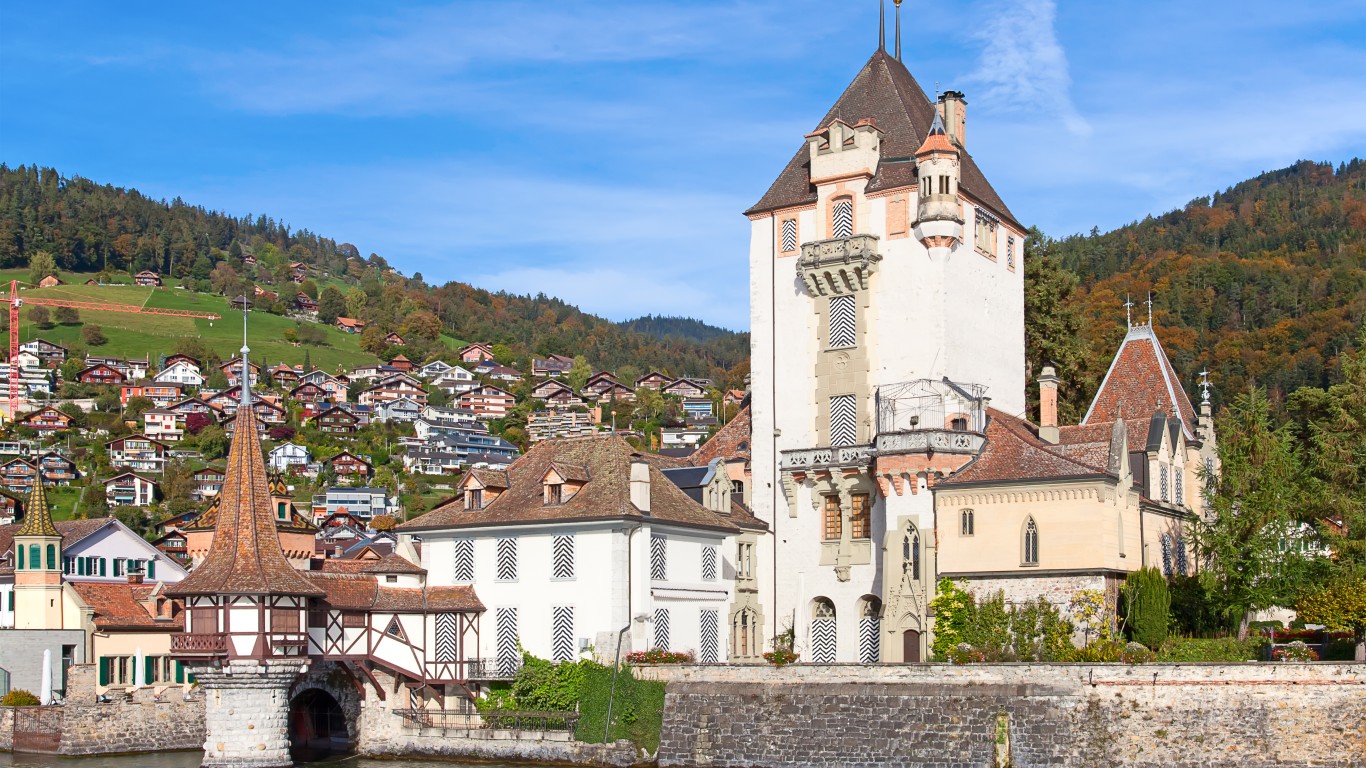
Oberhofen Castle
> Town or region: Oberhofen, Switzerland
> Century: 13th-14th
Like many such edifices, this castle on the banks of Lake Thun has seen frequent expansions over the years. Since 1952, it has been part of the Historical Museum of Bern.
[in-text-ad-2]
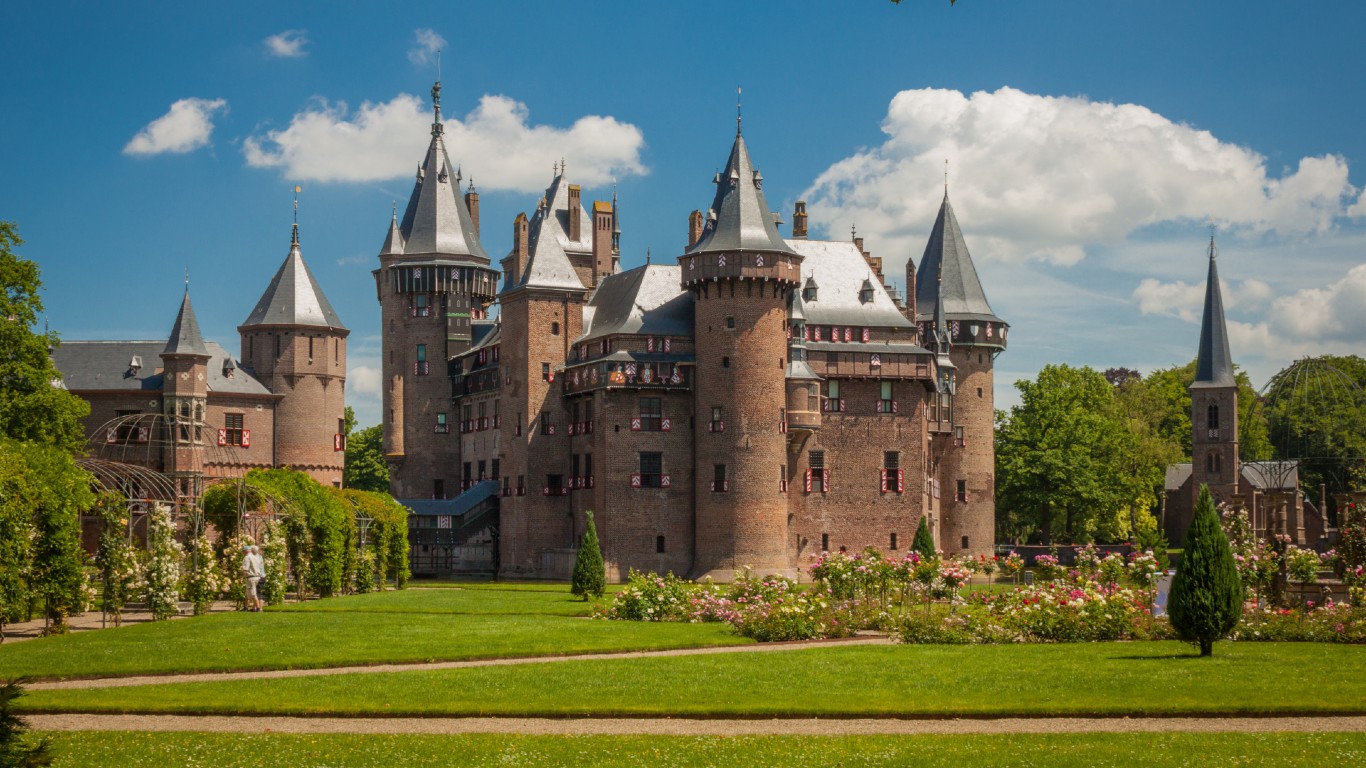
De Haar Castle
> Town or region: Utrecht, The Netherlands
> Century: 14th (rebuilt late 19th-early 20th)
Partially destroyed and rebuilt on several occasions throughout its history, this castle was restored over a 20-year period, beginning in 1892. The restoration included such up-to-date touches as central heating, electric lights, and a kitchen with what were then considered modern appliances.
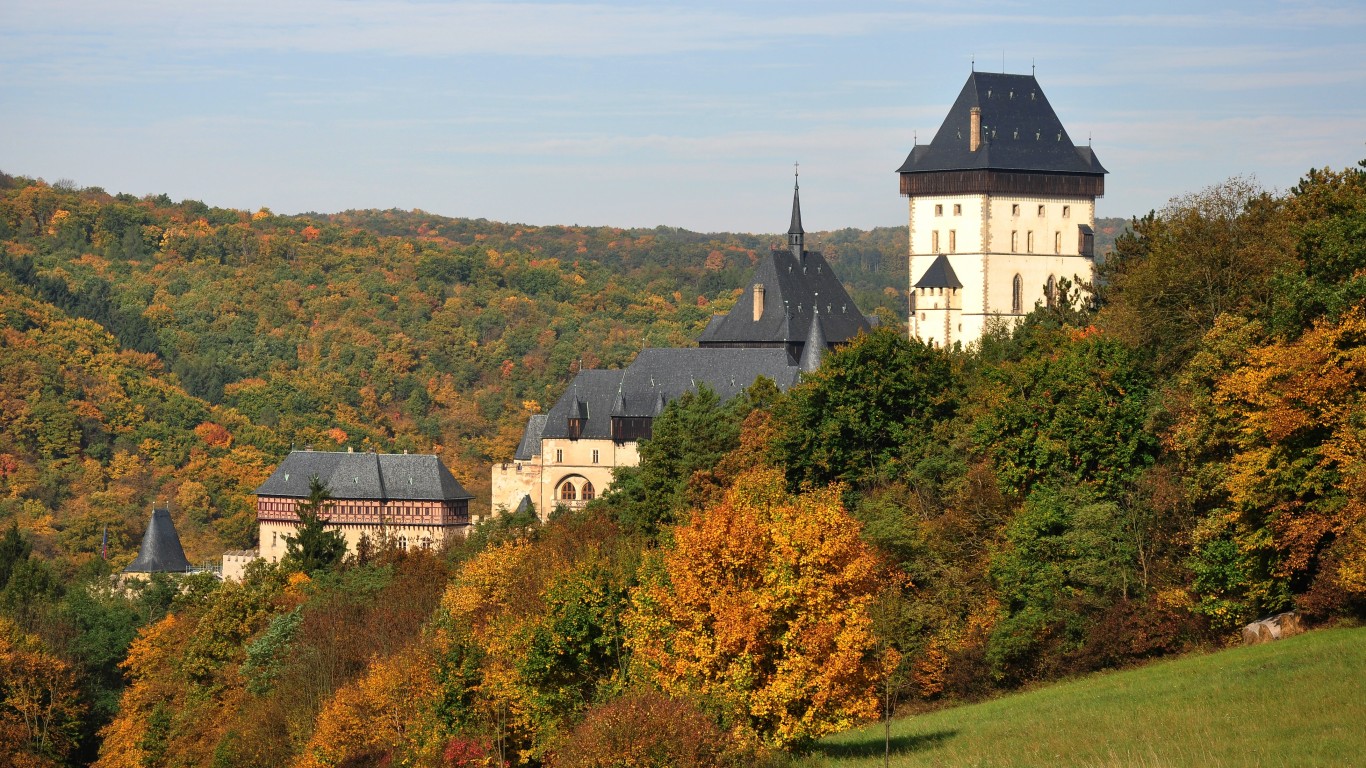
Karlštejn Castle
> Town or region: Karlštejn, Czechia
> Century: 14th
A huge Gothic castle, built by Charles IV, the future Holy Roman Emperor, Karlštejn was the repository of the Bohemian crown jewels.
[in-text-ad]
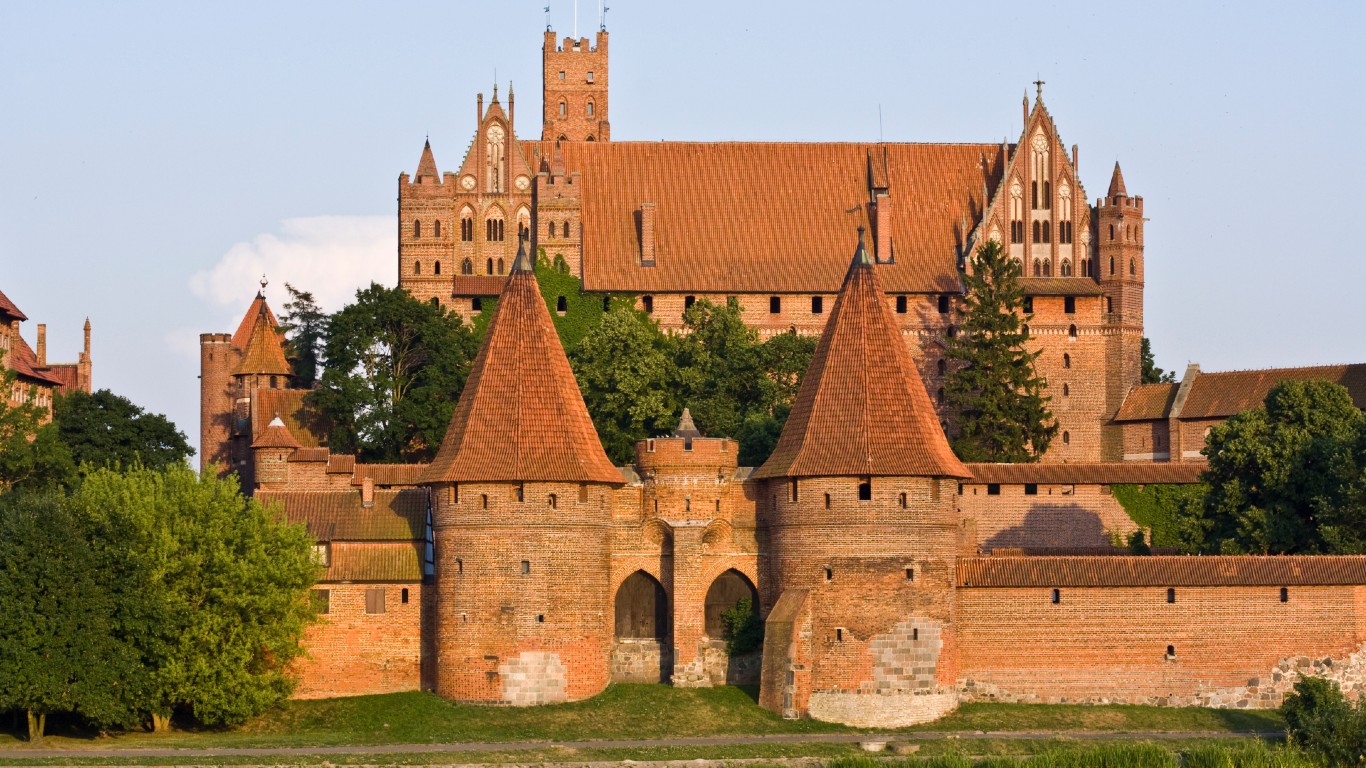
Bodiam Castle
> Town or region: Robertsbridge, England
> Century: 14th
This moated castle in East Sussex is known for the extensive landscaping planned by its builders. Though its exterior walls are still largely intact, the interior is in ruins.
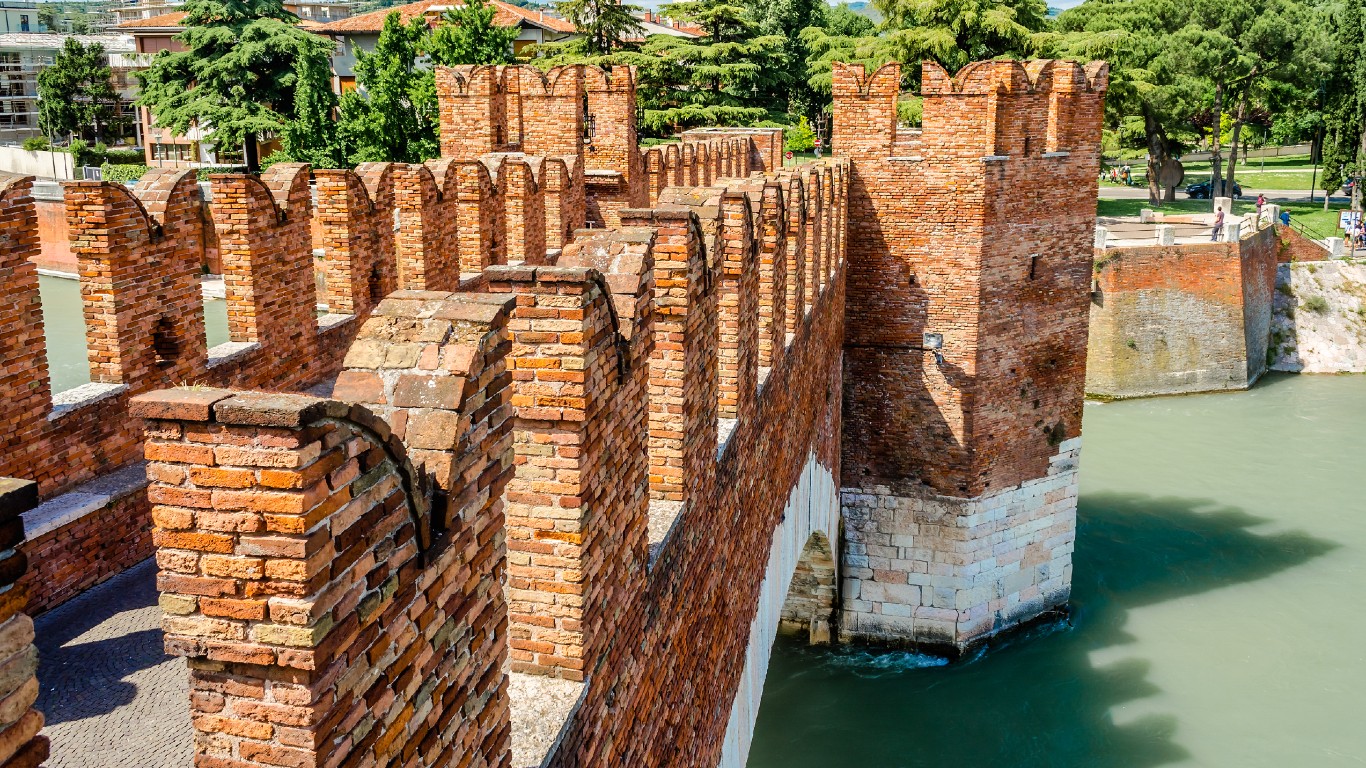
Castelvecchio
> Town or region: Verona, Italy
> Century: 14th
A well-preserved “old castle” (the translation of its Italian name) in the city of Romeo and Juliet, Castelvecchio is considered one of the major military fortifications in northern Italy.
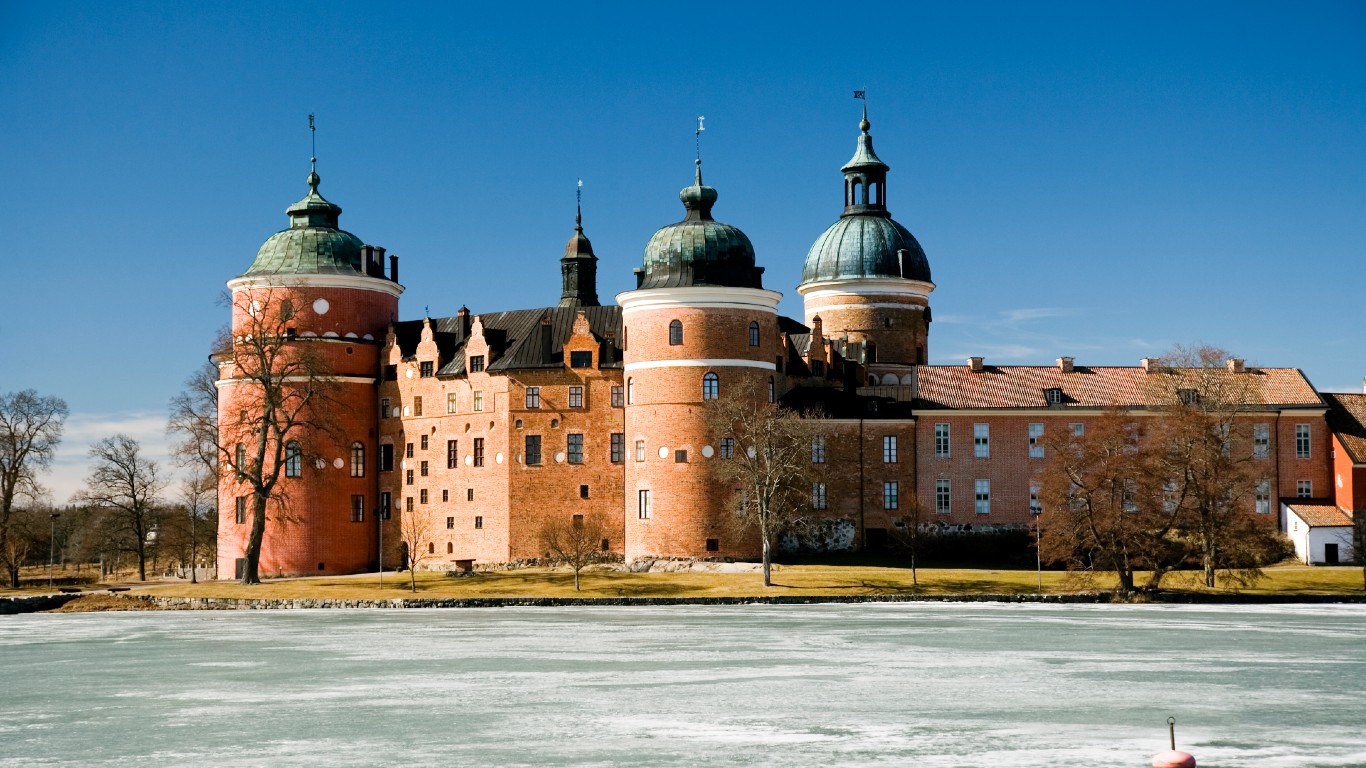
Gripsholm Castle
> Town or region: Mariefred, Sweden
> Century: 14th
On Lake Mälaren, west of Stockholm, this imposing castle, with its domed turrets, is the property of Sweden’s royal family.
[in-text-ad-2]
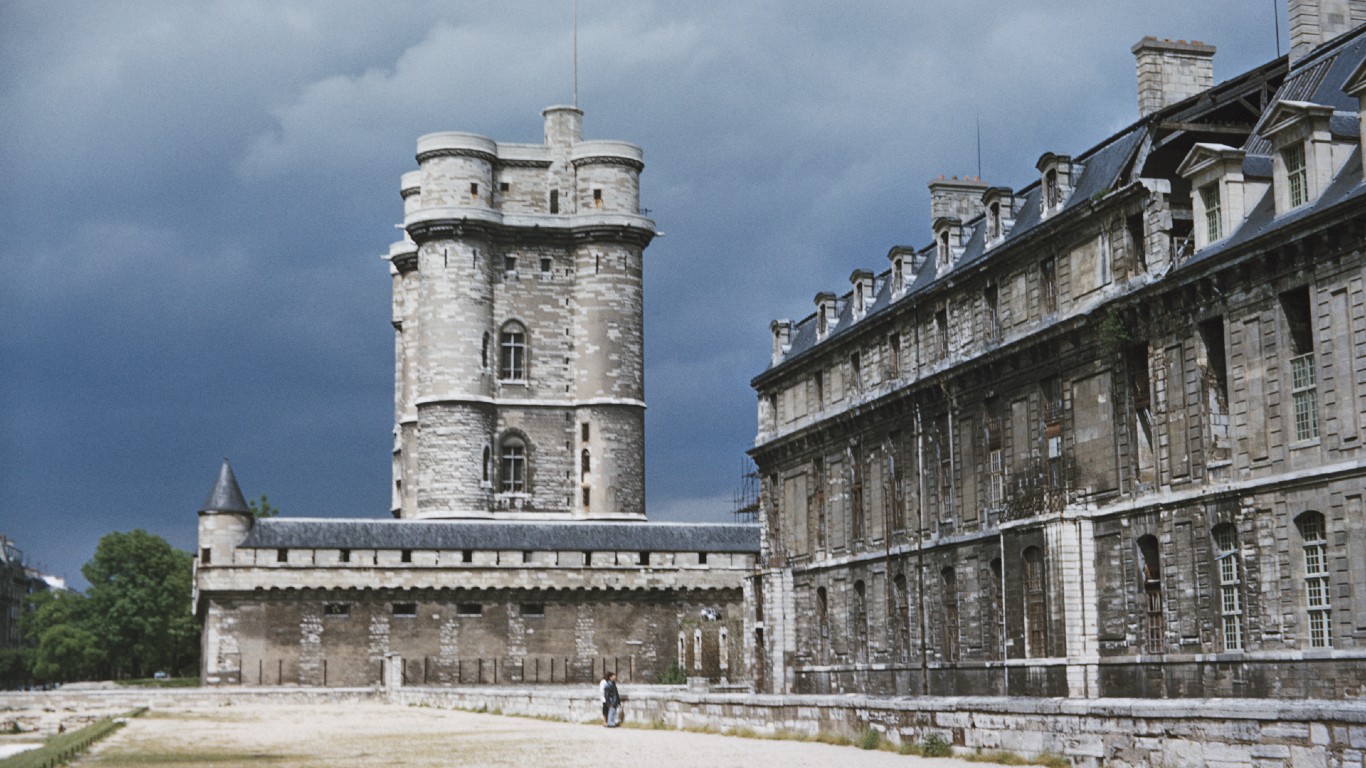
Château de Vincennes
> Town or region: Vincennes, France
> Century: 14th and 17th
Originally built as a royal hunting lodge in the forest of Vincennes, just east of Paris (and now a part of that city’s metro area) this château is instantly recognizable by the 170-foot-high keep (the most strongly fortified part of a castle — the panic room, as it were).
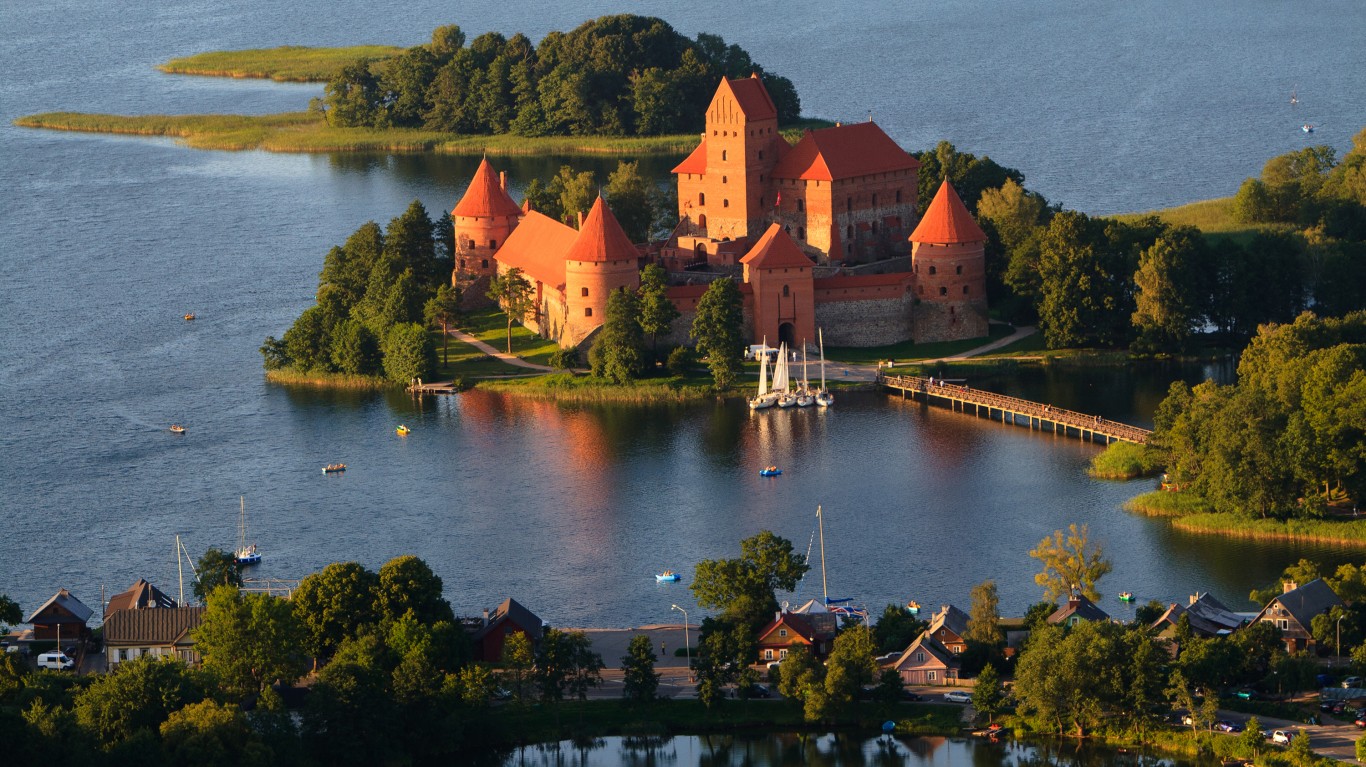
Trakai Island Castle
> Town or region: Trakai (Lake Galvé), Lithuania
> Century: 14th-15th
Built on an island, this castle was a center of medieval Lithuanian power. It was restored in the mid-20th century by Lithuania’s government when the country was still part of the USSR, despite the opposition of the Soviets.
[in-text-ad]
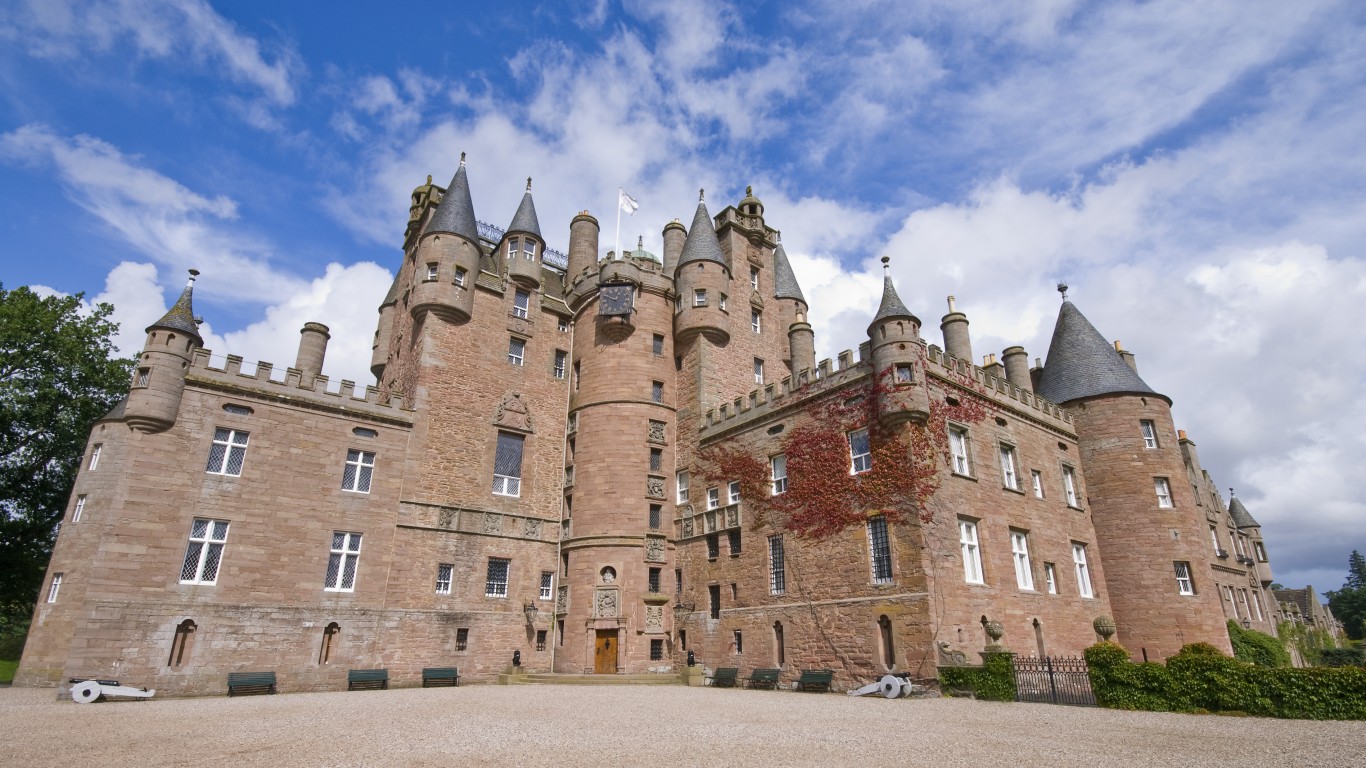
Glamis Castle
> Town or region: Glamis, Scotland
> Century: 14th-17th
Depicted on the Royal Bank of Scotland’s £10 notes, this well-preserved castle has been said over the centuries to be haunted by ghosts, monsters, and devils.
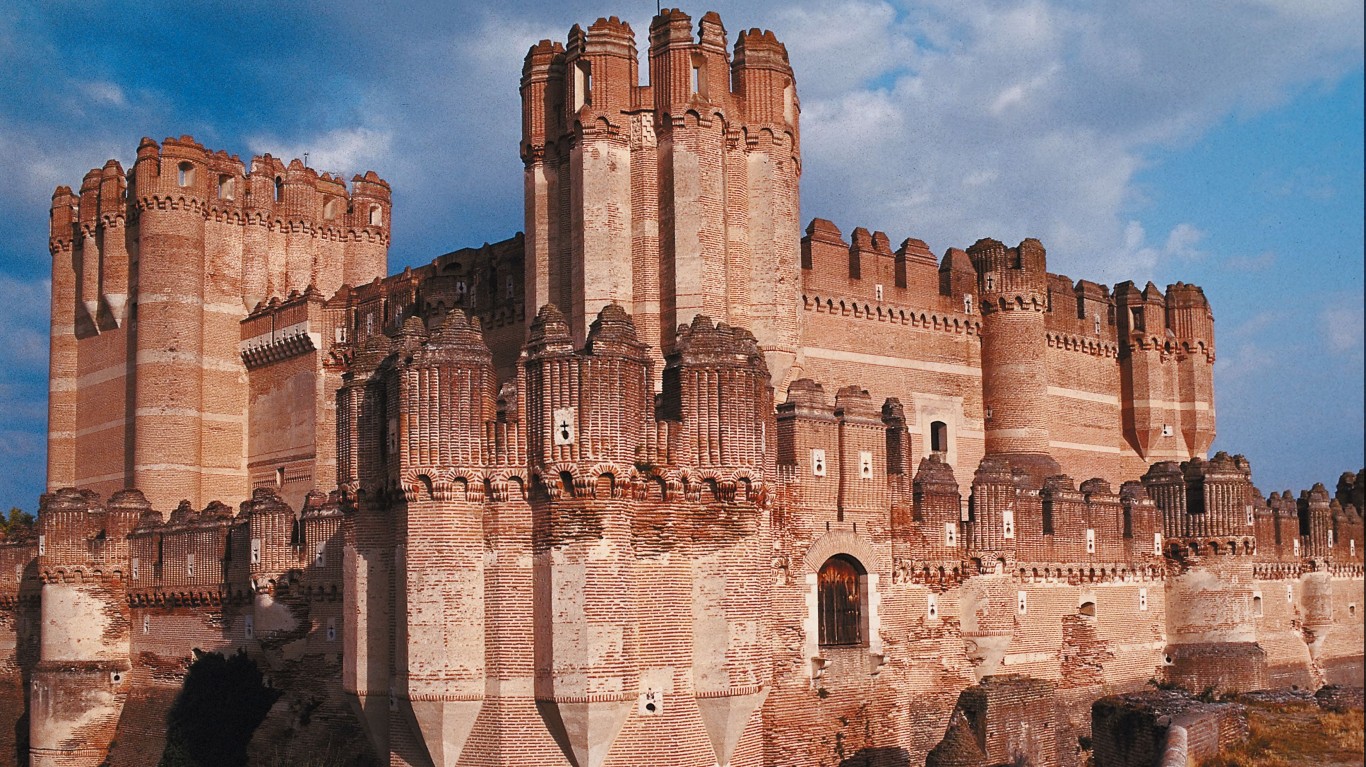
Castillo de Coca
> Town or region: Coca, Spain
> Century: 15th
With elements of both Moorish and Gothic architecture, this moated brickwork castle in central Spain was the birthplace of Theodosius I, the late-Roman emperor who established Christianity as the empire’s official religion.
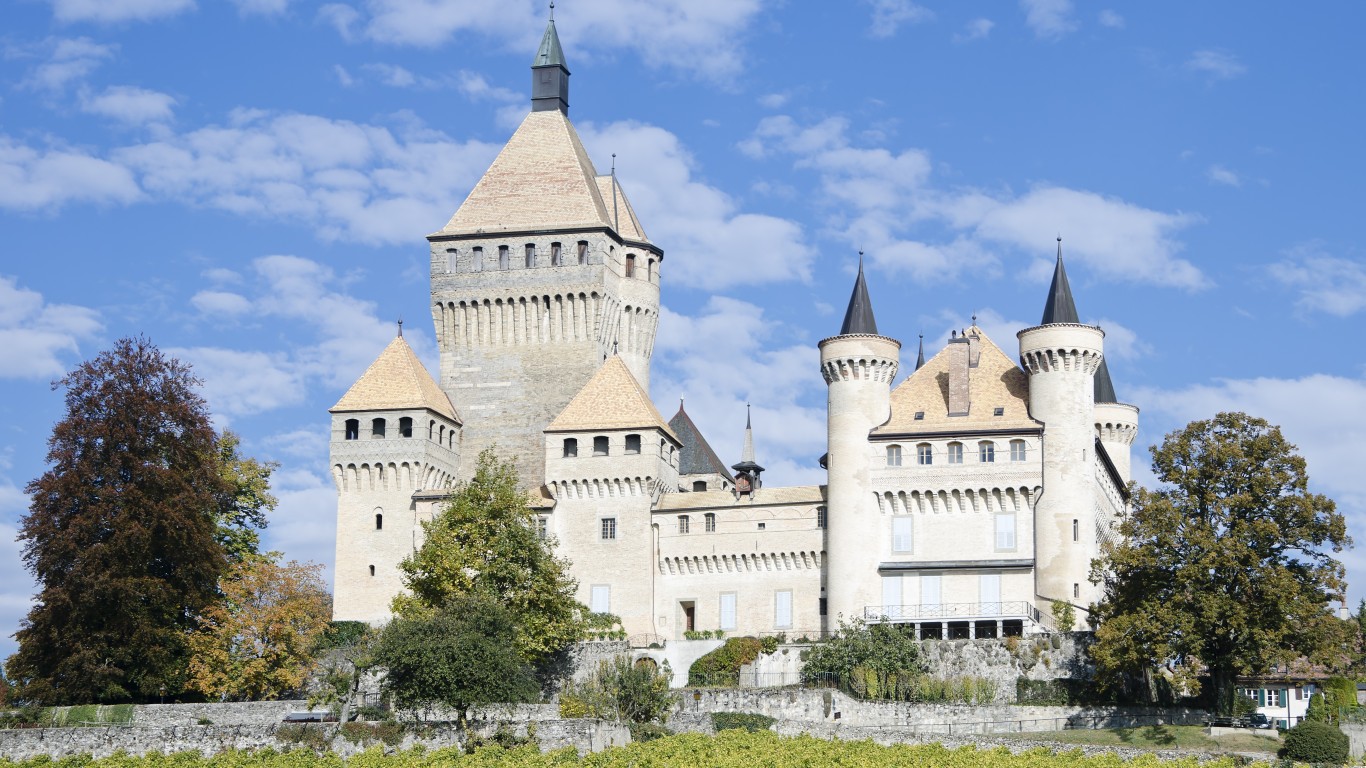
Vufflens Castle
> Town or region: Vufflens-le-Château, Switzerland
> Century: 15th
Overlooking Lake Geneva, this medieval redoubt was built on the site of an older castle established around 1100 and later destroyed. Vineyards surrounding the complex today produce an acclaimed chardonnay.
[in-text-ad-2]
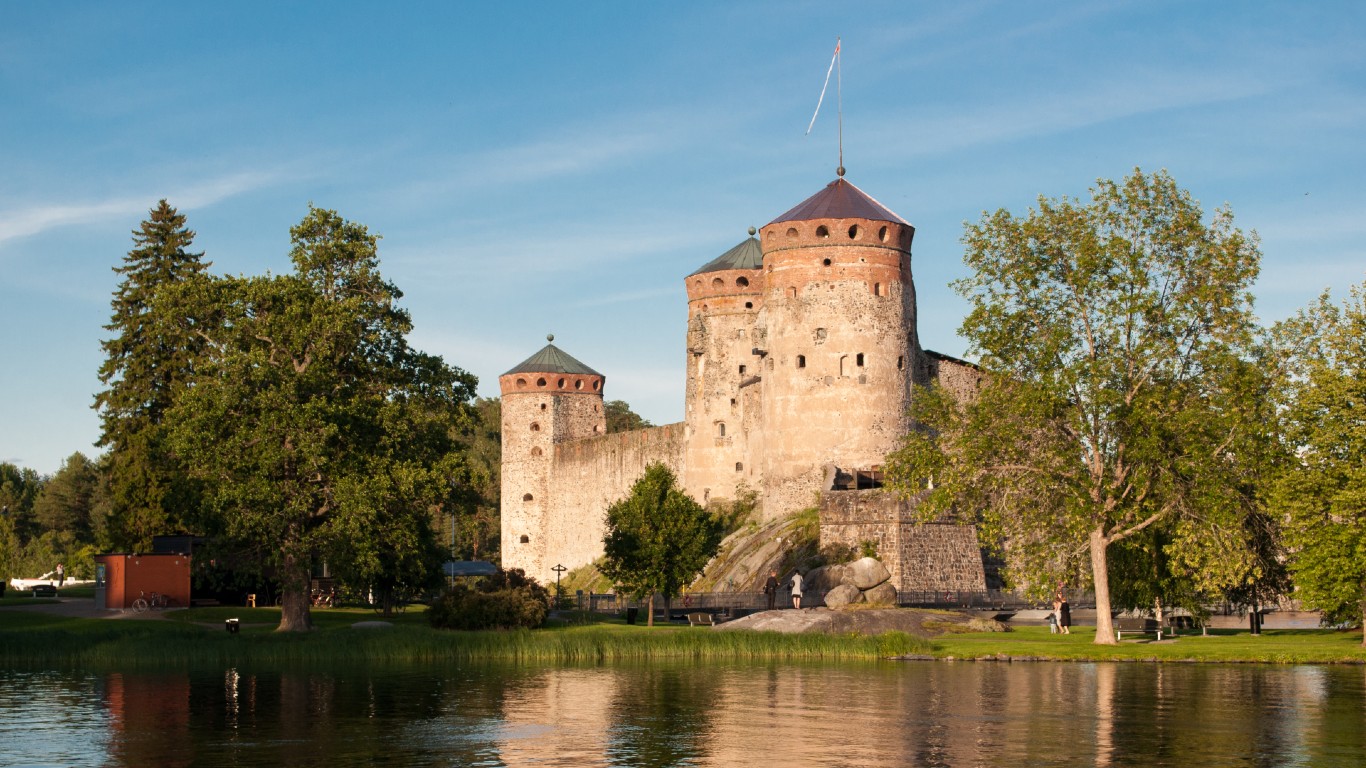
Olavinlinna
> Town or region: Savonlinna, Finland
> Century: 15th
This impressive island fortress, the northernmost medieval stone structure of its kind still in existence, is the site of the annual summertime Savonlinna Opera Festival.
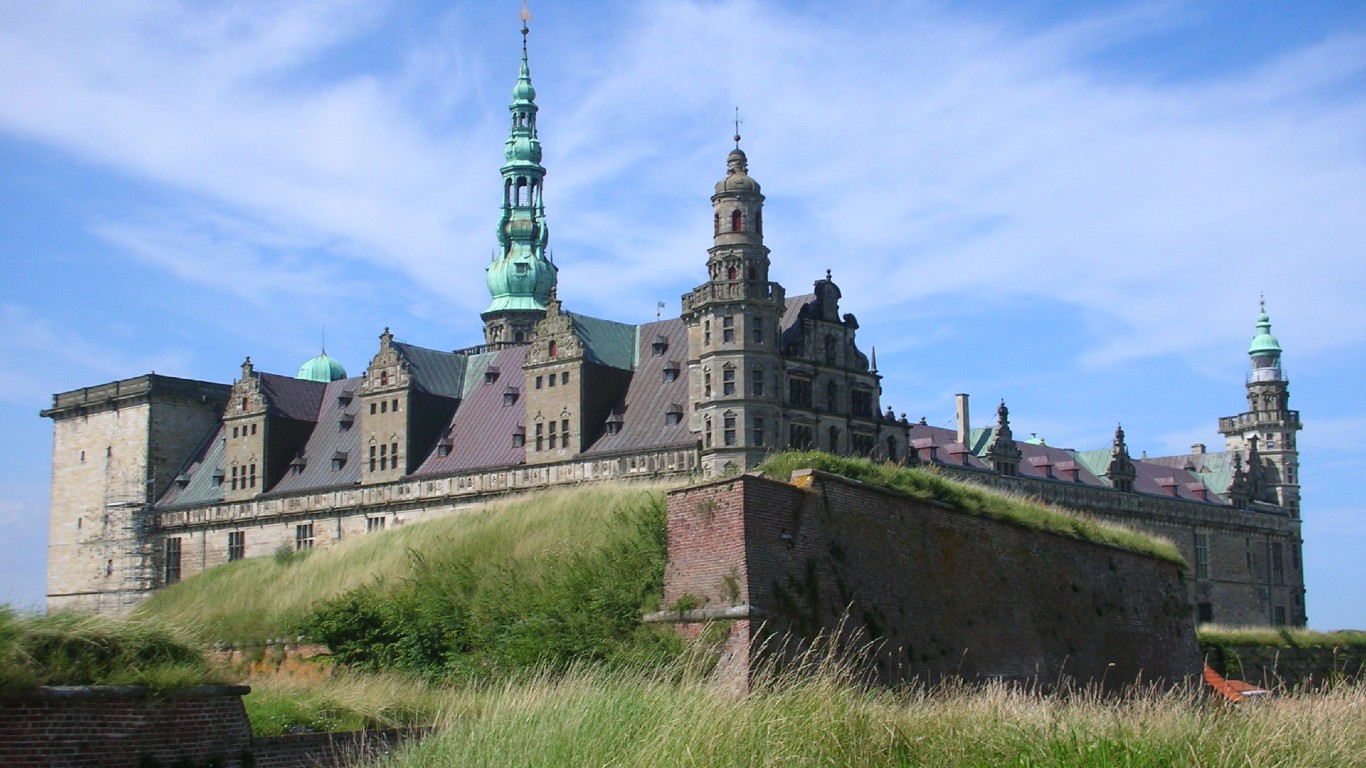
Kronborg
> Town or region: Helsinger, Denmark
> Century: 15th-17th
A UNESCO World Heritage Site, rated as one of the premiere Renaissance-era castles in Scandinavia, Kronborg was the inspiration for Elsinore (the name is an English approximation of “Helsinger”) in Shakespeare’s “Hamlet.”
[in-text-ad]
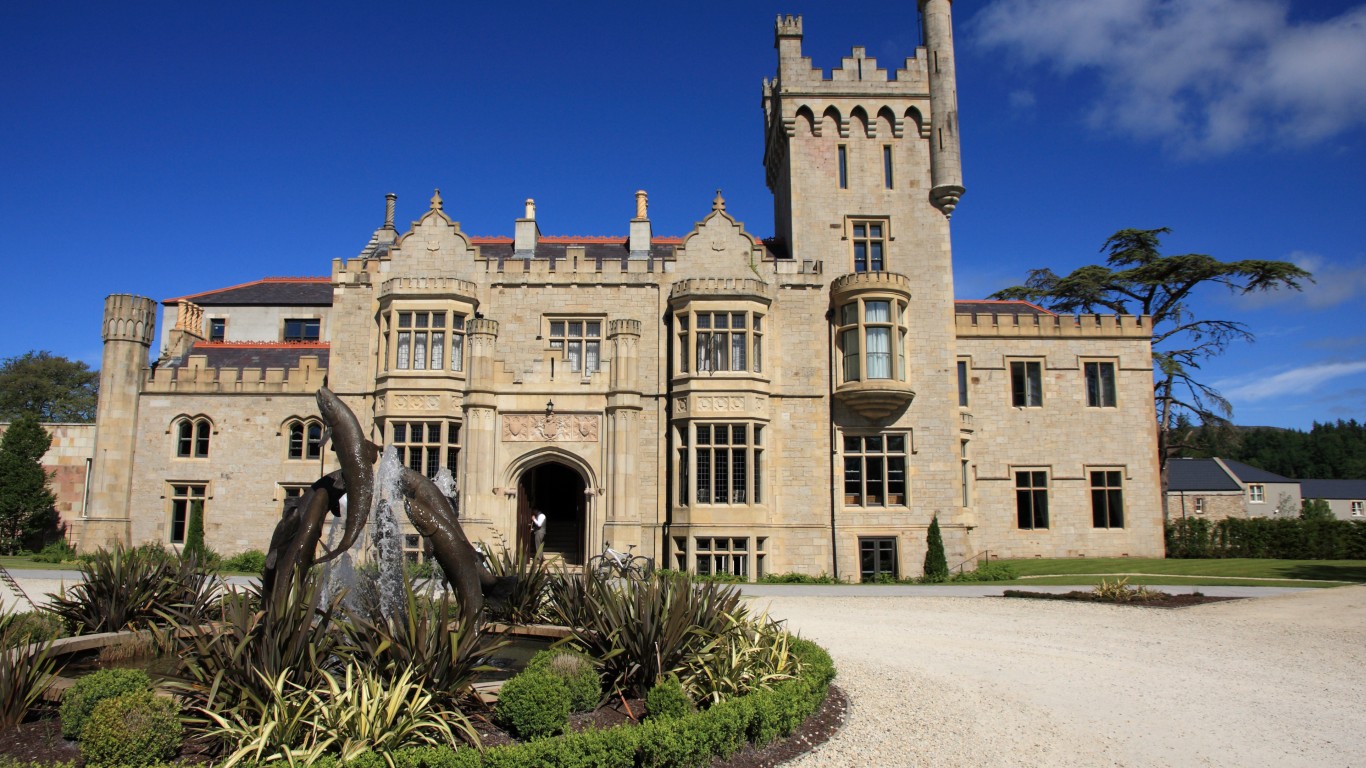
Donegal Castle
> Town or region: Donegal Town, Ireland
> Century: 15th-17th
Legend has it that there was a 12th-century Viking fortress on the site of this famed riverside castle. Built by a chieftain of the O’Donnell clan in 1474, it was subsequently expanded. In ruins for most of the 19th and 20th centuries, it was restored in the 1990s.
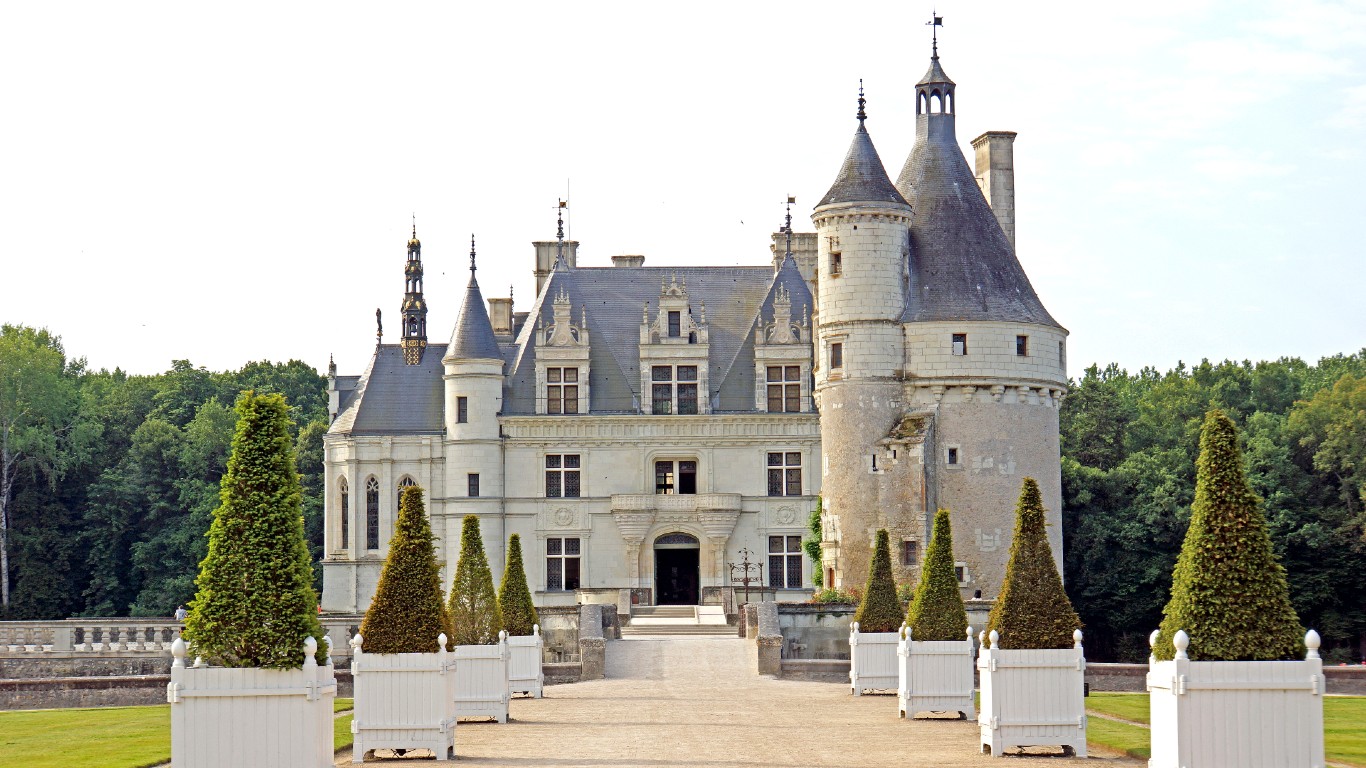
Château de Chenonceau
> Town or region: Chenonceaux (Loire Valley), France
> Century: 16th
Of all the famed châteaux of France’s Loire Valley, this is one of the most famous and most beautiful. It is also a rare example of a castle constructed on a bridge reaching across a river.
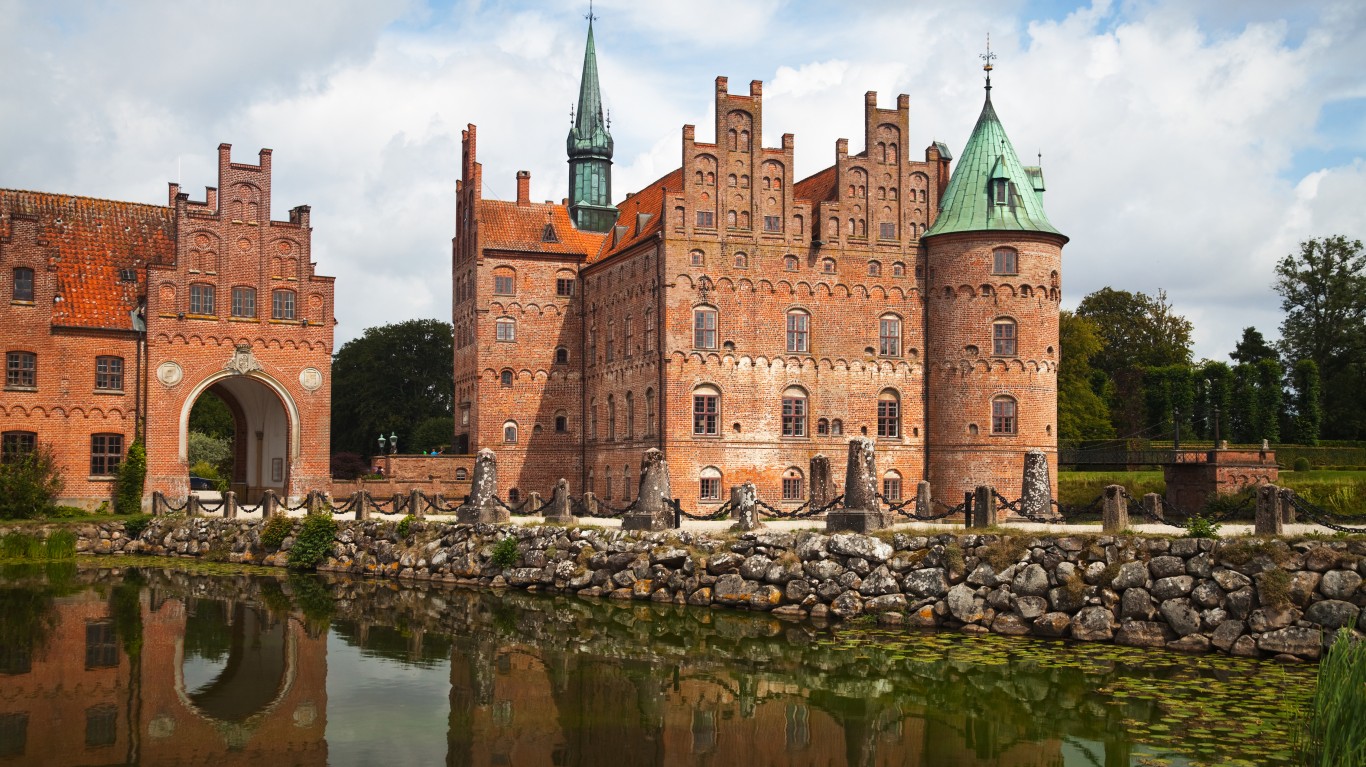
Egeskov Castle
> Town or region: Kværndrup (Funen Island), Denmark
> Century: 16th
This late medieval-era castle is today the site of extensive flower, herb, and vegetable gardens and houses museums devoted to cars, motorcycles, and the history of agriculture, among other things. A full-sized replica of Egeskov was built in Hokkaido, Japan, in 1986.
[in-text-ad-2]
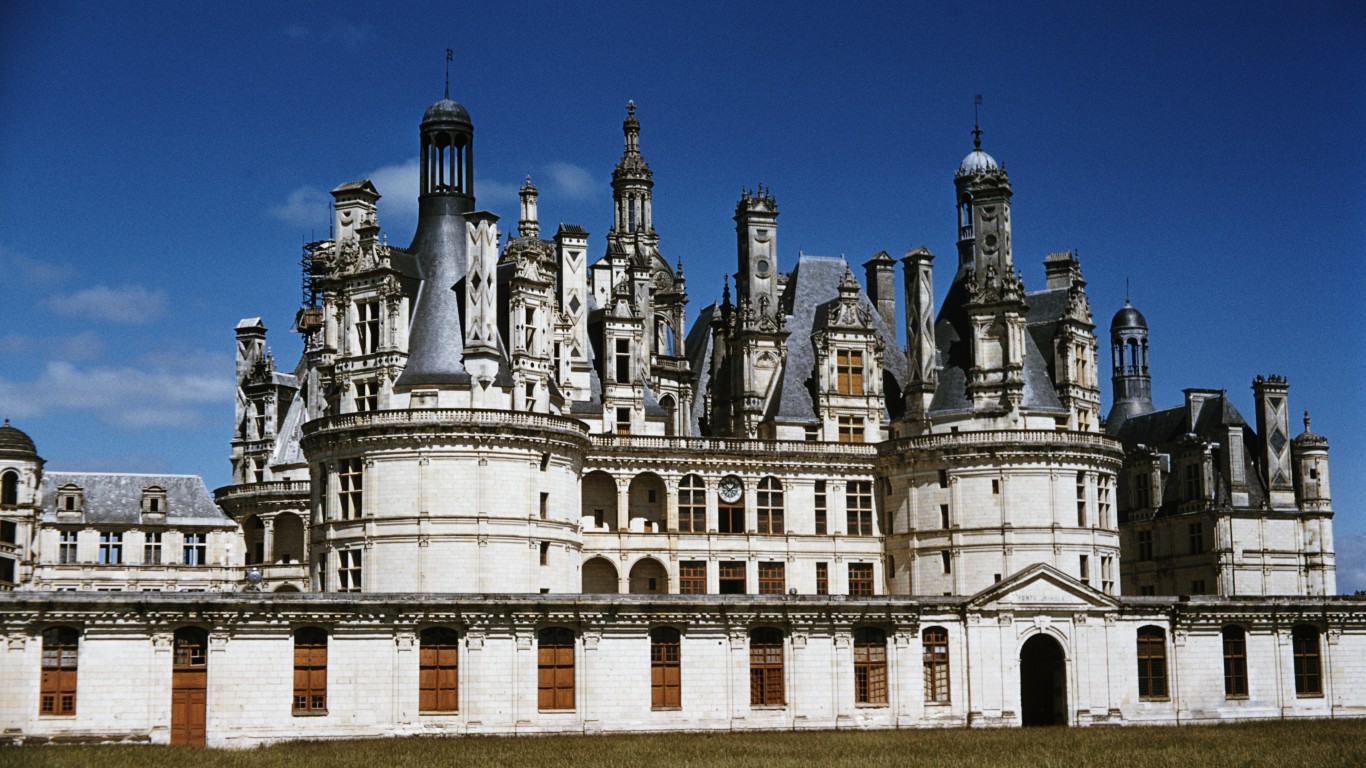
Château de Chambord
> Town or region: Chambord (Loire Valley), France
> Century: 16th
The largest château in the Loire Valley, Chambord is a major tourist attraction and has lent its name to a famed liqueur and many other products. During World War II, some of France’s greatest art treasures, including the Mona Lisa, were stored here for safekeeping — appropriately since it’s possible that Leonardo da Vinci had a hand in designing the castle originally.
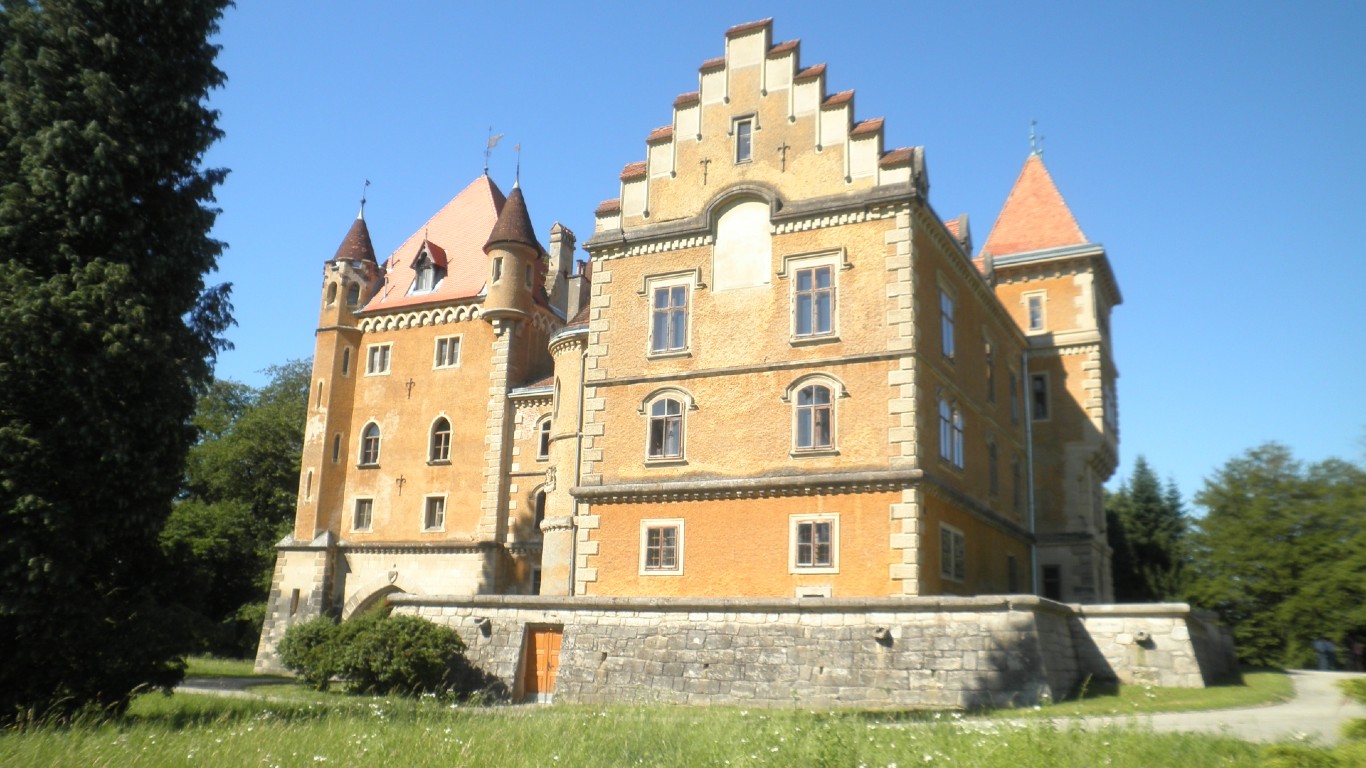
Maruševec Castle
> Town or region: Maruševec, Croatia
> Century: 16th
Though it’s one of the best-preserved and most imposing castles in Croatia, this one-time nobleman’s retreat was once famous for its gardens and collection of rare trees, now much diminished.
[in-text-ad]
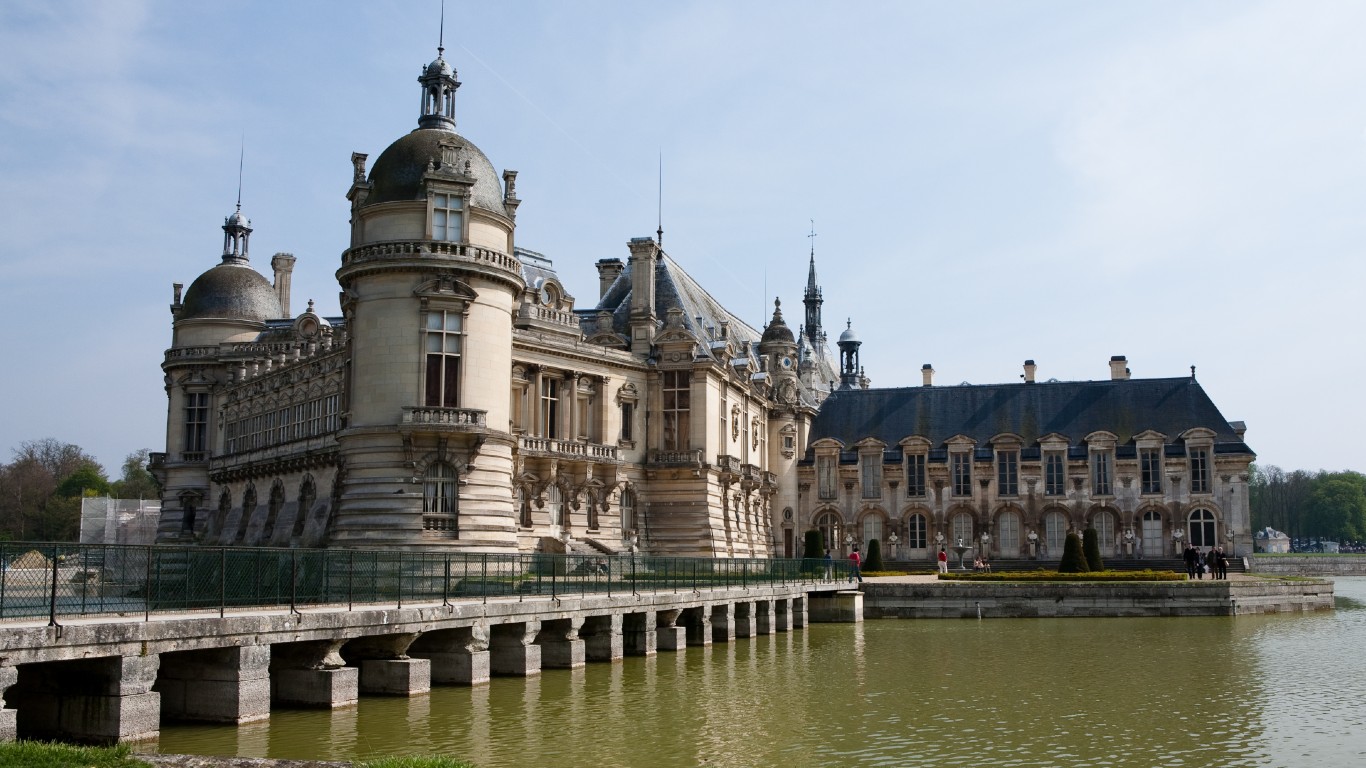
Château de Chantilly
> Town or region: Chantilly, France
> Century: 16th (rebuilt 19th)
There are two main structures here — the Petit Château and the Grand Château (the latter destroyed during the French Revolution but replaced in the late 19th century). The castle is the site of the Musée Condé, housing one of the most important art collections in France, and the site overlooks the famed Chantilly racecourse.
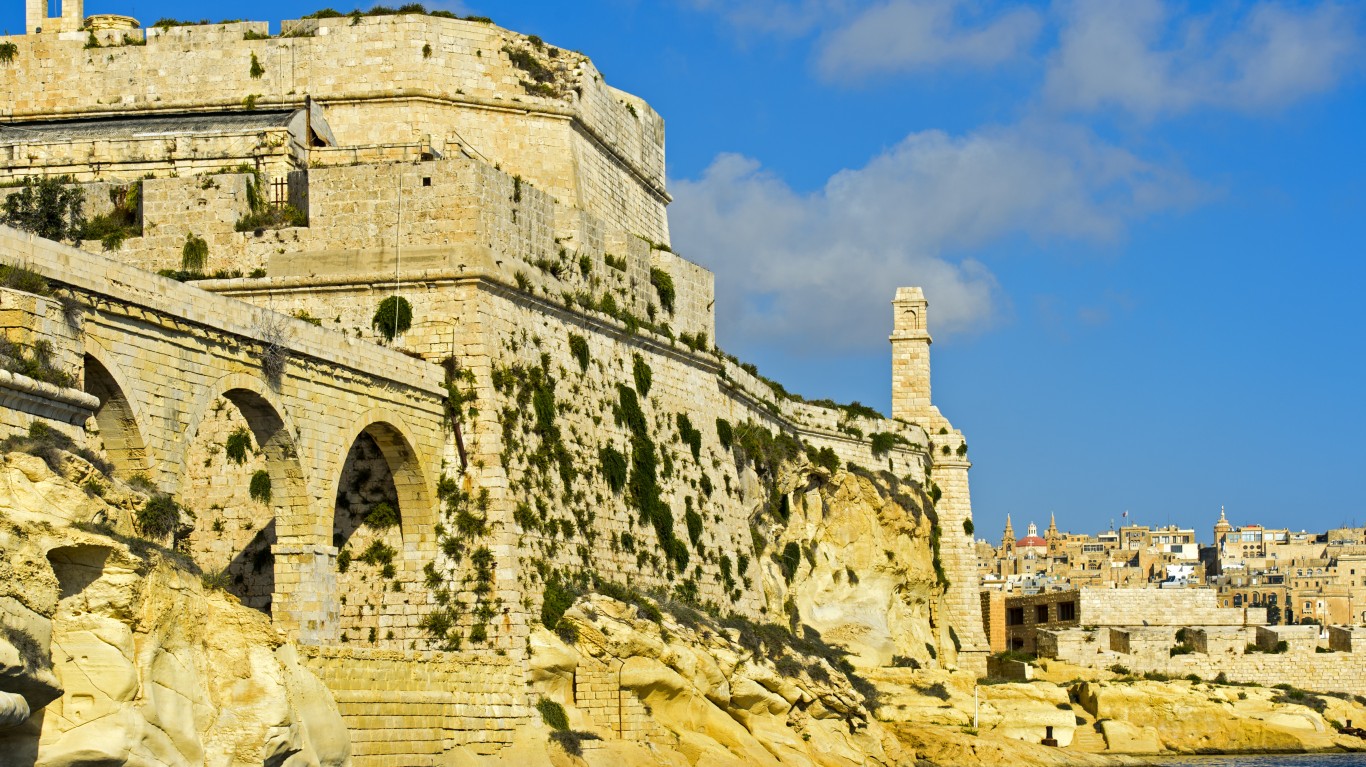
Fort St. Angelo
> Town or region: Birgu, Malta
> Century: 16th-17th
A bastion on a promontory jutting out into the Mediterranean, this castle was a stronghold for the Knights of St. John — also known as the Knights Hospitaller and the Knights of Malta.
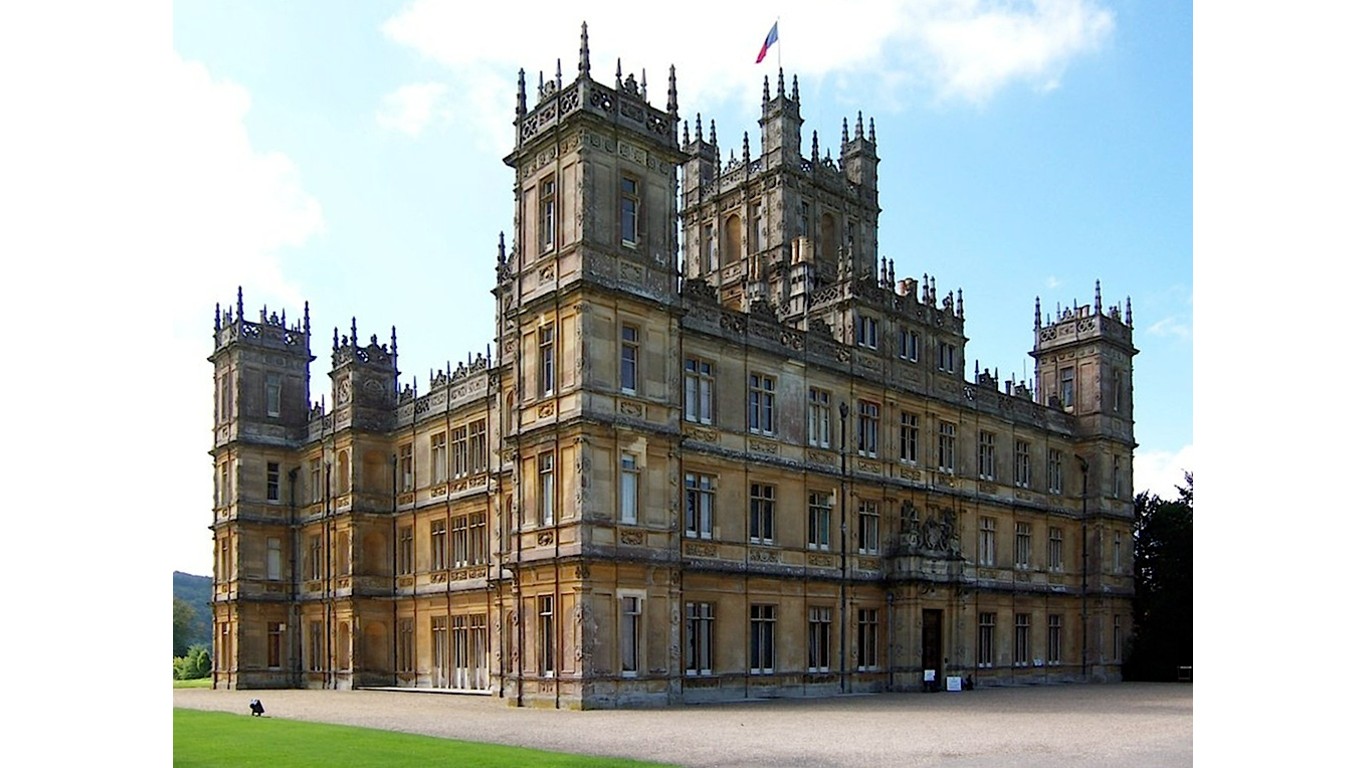
Highclere Castle
> Town or region: Highclere, England
> Century: 17th
Millions of TV viewers will recognize this edifice, as it served as the primary location for the popular PBS series “Downton Abbey.”
[in-text-ad-2]
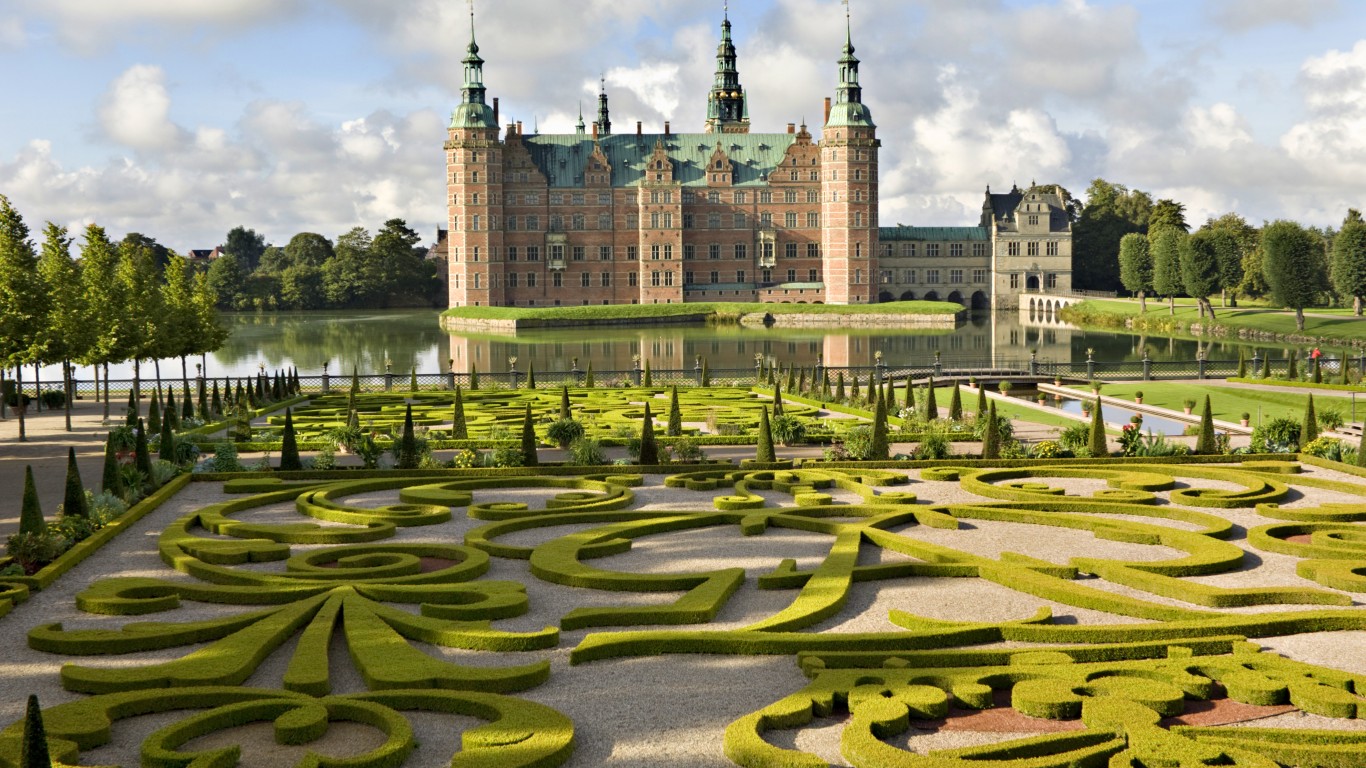
Frederiksborg Castle
> Town or region: Hillerød, Denmark
> Century: 17th
Built on the site of an earlier fortress for Christian IV, a 17th-century king of unified Denmark-Norway, Frederiksborg was severely damaged by fire in 1859, but rebuilt according to the original plans.
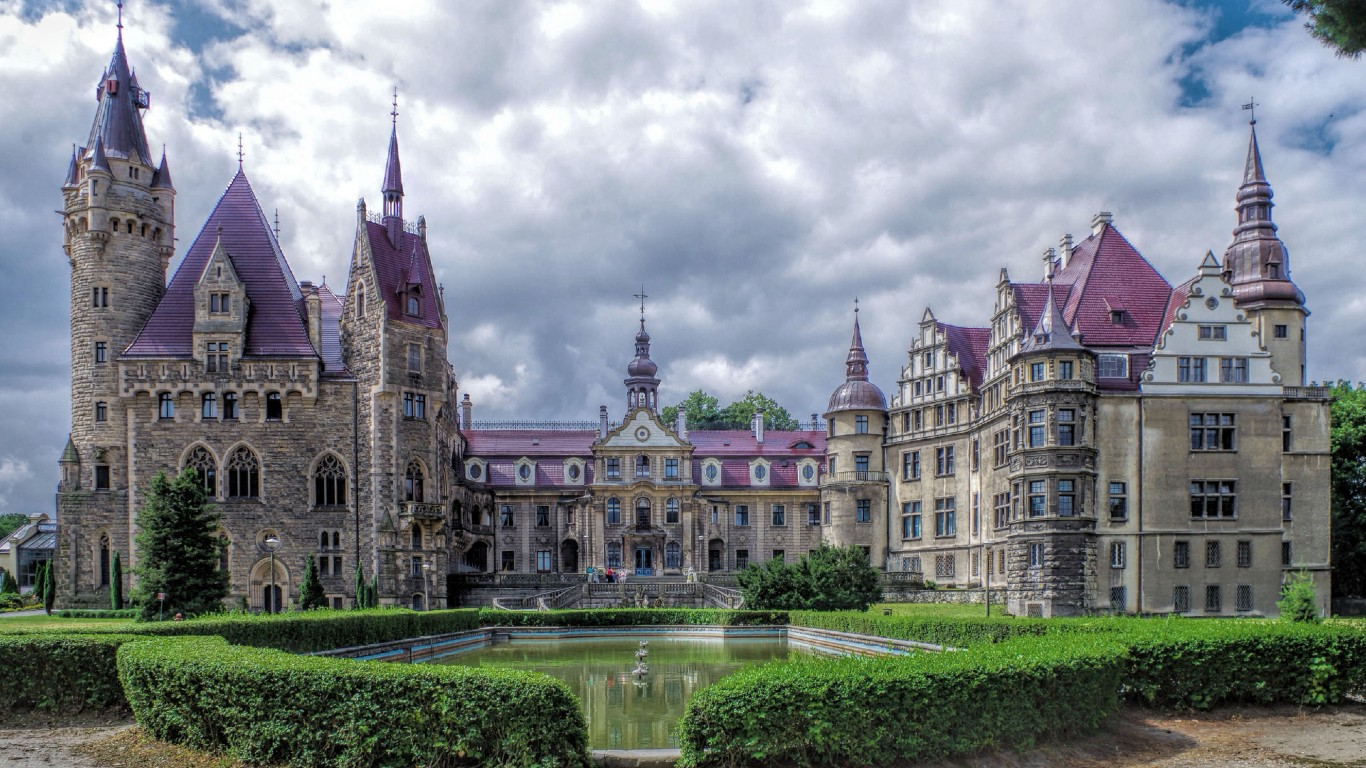
Moszna Castle
> Town or region: Moszna, Poland
> Century: 18th-20th
This fairytale castle, with its many towers and steeples, has been called “whimsical” and “one of the world’s most beautiful castles.”
[in-text-ad]
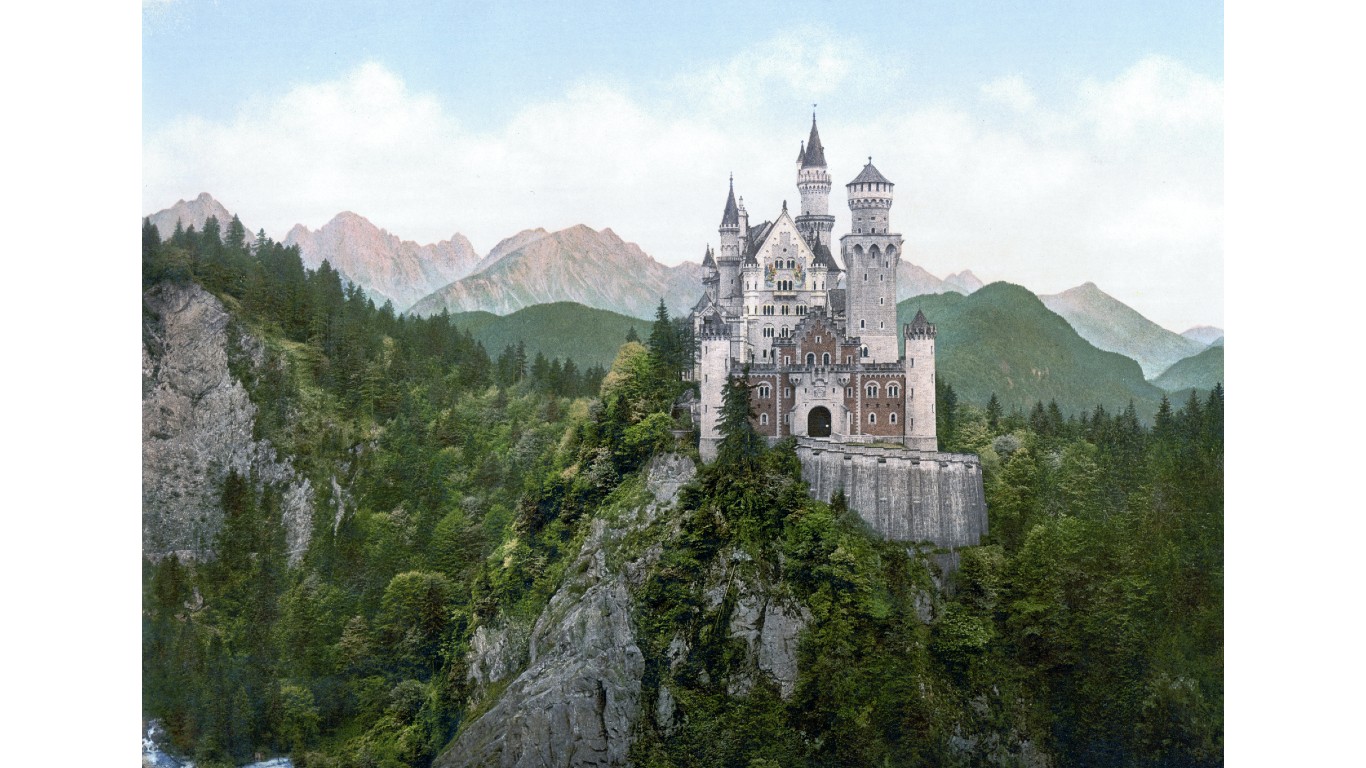
Neuschwanstein Castle
> Town or region: Hohenschwangau, Germany
> Century: 19th
One of several impressive structures built for King Ludwig II of Bavaria — known as “Mad King Ludwig” or (more kindly) “the Fairy Tale King” — Neuschwanstein was an example of “castle romanticism,” said to have been inspired by the monarch’s love for the music of Richard Wagner.
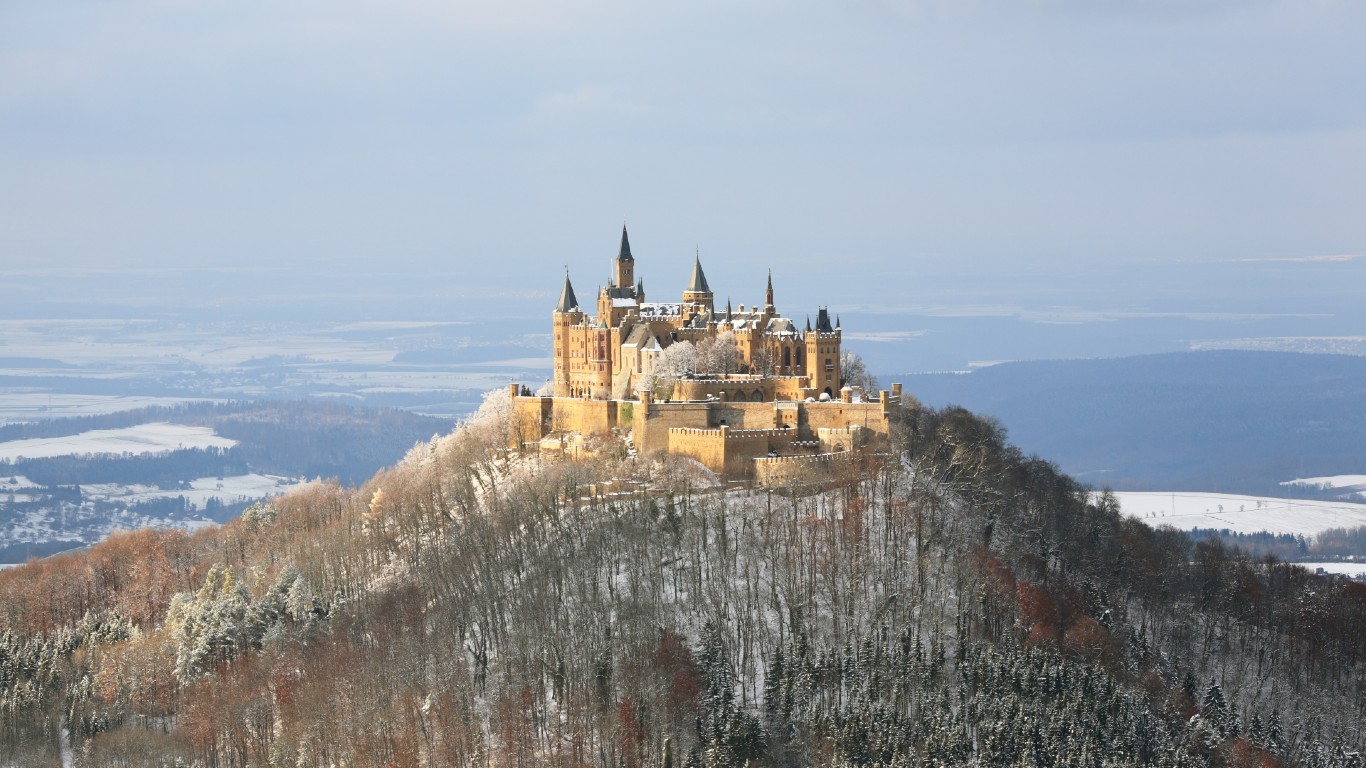
Hohenzollern Castle
> Town or region: Bisengen. Germany
> Century: 19th
Constructed at the top of Mount Hohenzollern on the site of a 12th-century predecessor, this monumental fortress, inspired in part by the châteaux of France’s Loire Valley, was built by the crown prince of Prussia as a memorial to his family.
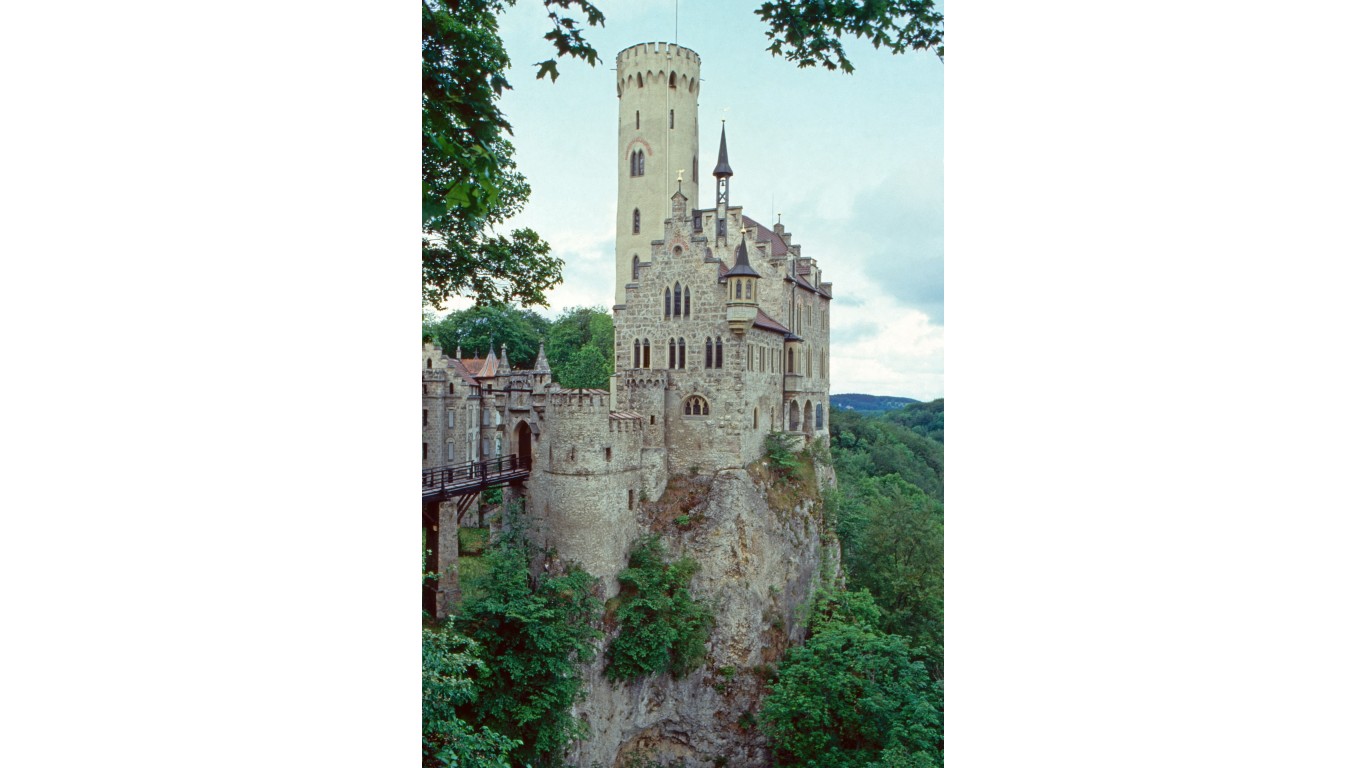
Lichtenstein Castle
> Town or region: Honau, Germany
> Century: 19th
This castle in the German municipality of Lichtenstein — not to be confused with the principality of Liechtenstein, about 90 miles to the south — is an example of so-called castle romanticism, in this case inspired by poet Wilhelm Hauff’s 1826 historical novel “Lichtenstein.”
[in-text-ad-2]
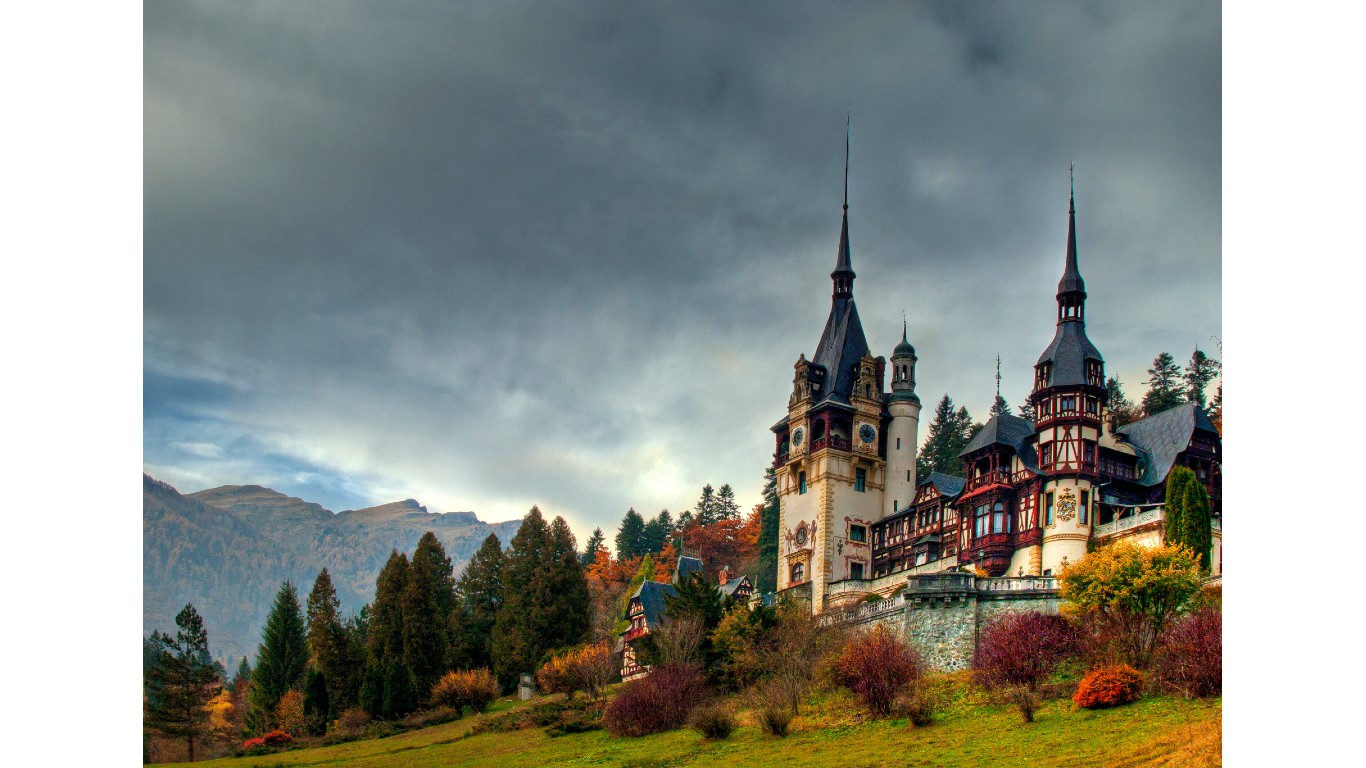
Peleș Castle
> Town or region: Sinaia, Romania
> Century: Late 19th-early 20th
Built at the behest of Romania’s King Carol I, this neo-Renaissance castle, with its half-timbered façade, played the part of a billionaire’s estate in New Jersey in the 2008 comedy-drama “The Brothers Bloom.”
Travel Cards Are Getting Too Good To Ignore
Credit card companies are pulling out all the stops, with the issuers are offering insane travel rewards and perks.
We’re talking huge sign-up bonuses, points on every purchase, and benefits like lounge access, travel credits, and free hotel nights. For travelers, these rewards can add up to thousands of dollars in flights, upgrades, and luxury experiences every year.
It’s like getting paid to travel — and it’s available to qualified borrowers who know where to look.
We’ve rounded up some of the best travel credit cards on the market. Click here to see the list. Don’t miss these offers — they won’t be this good forever.
Thank you for reading! Have some feedback for us?
Contact the 24/7 Wall St. editorial team.
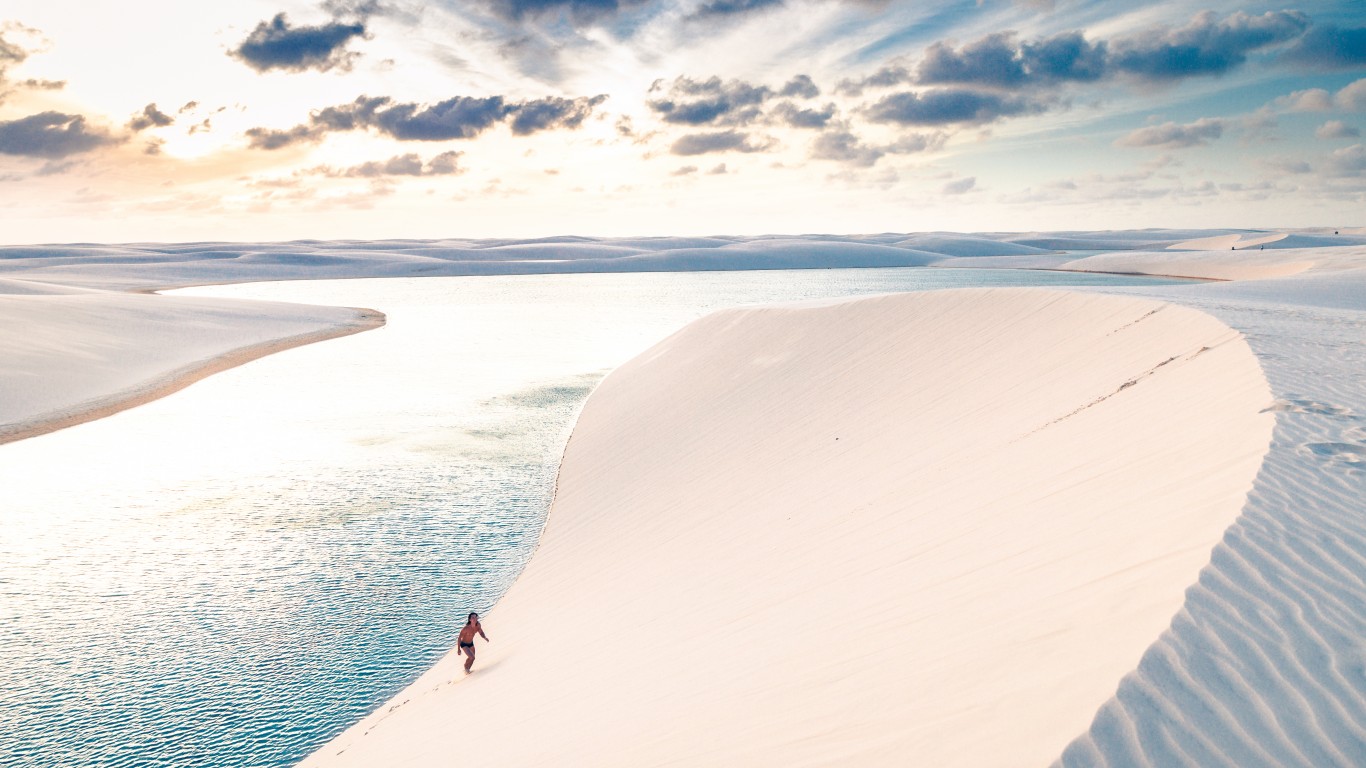 24/7 Wall St.
24/7 Wall St.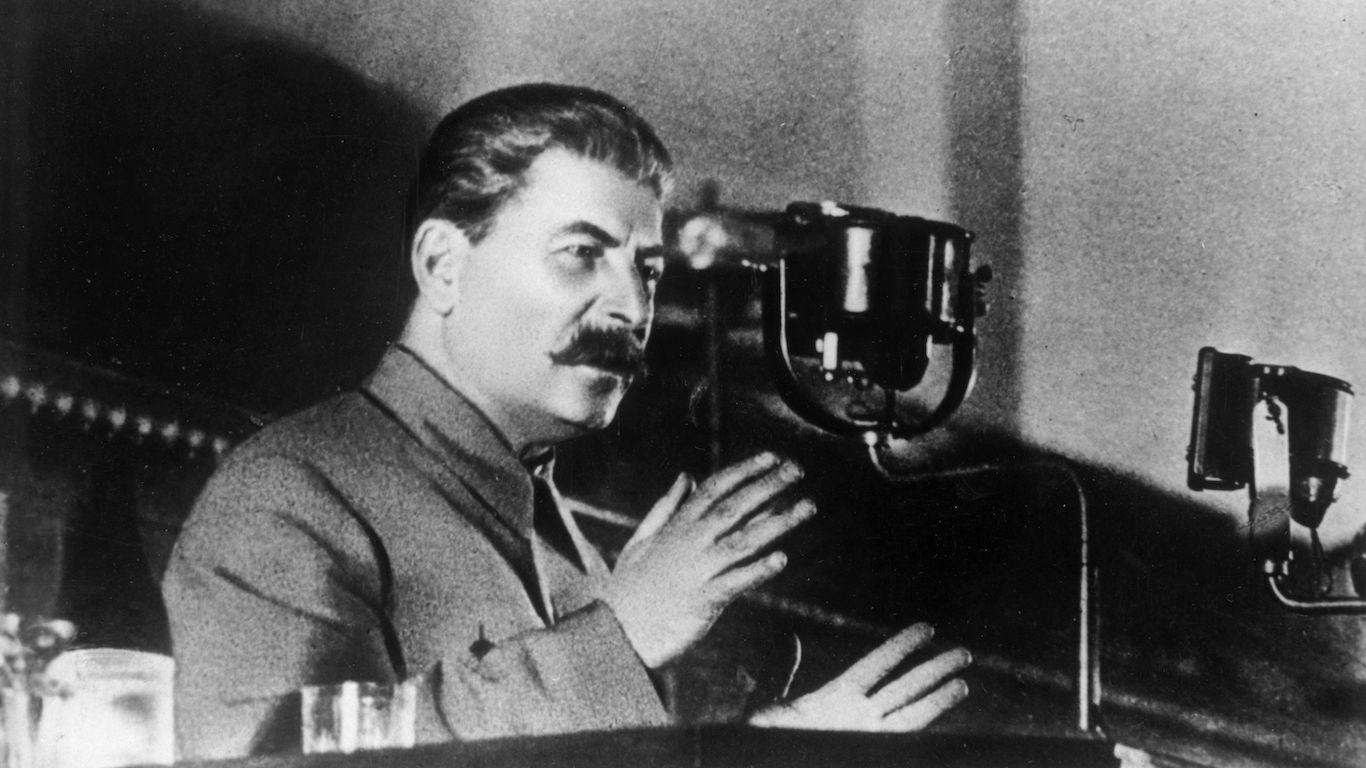 24/7 Wall St.
24/7 Wall St.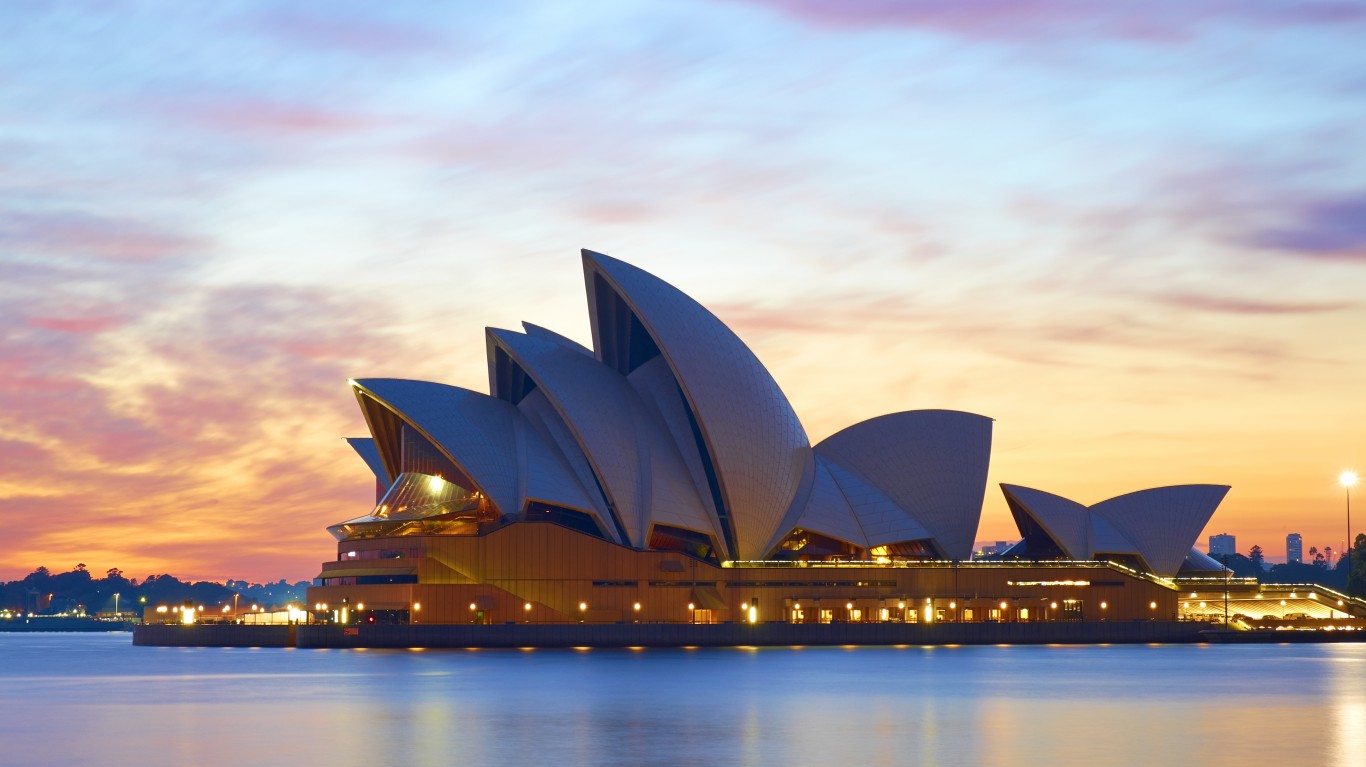 24/7 Wall St.
24/7 Wall St.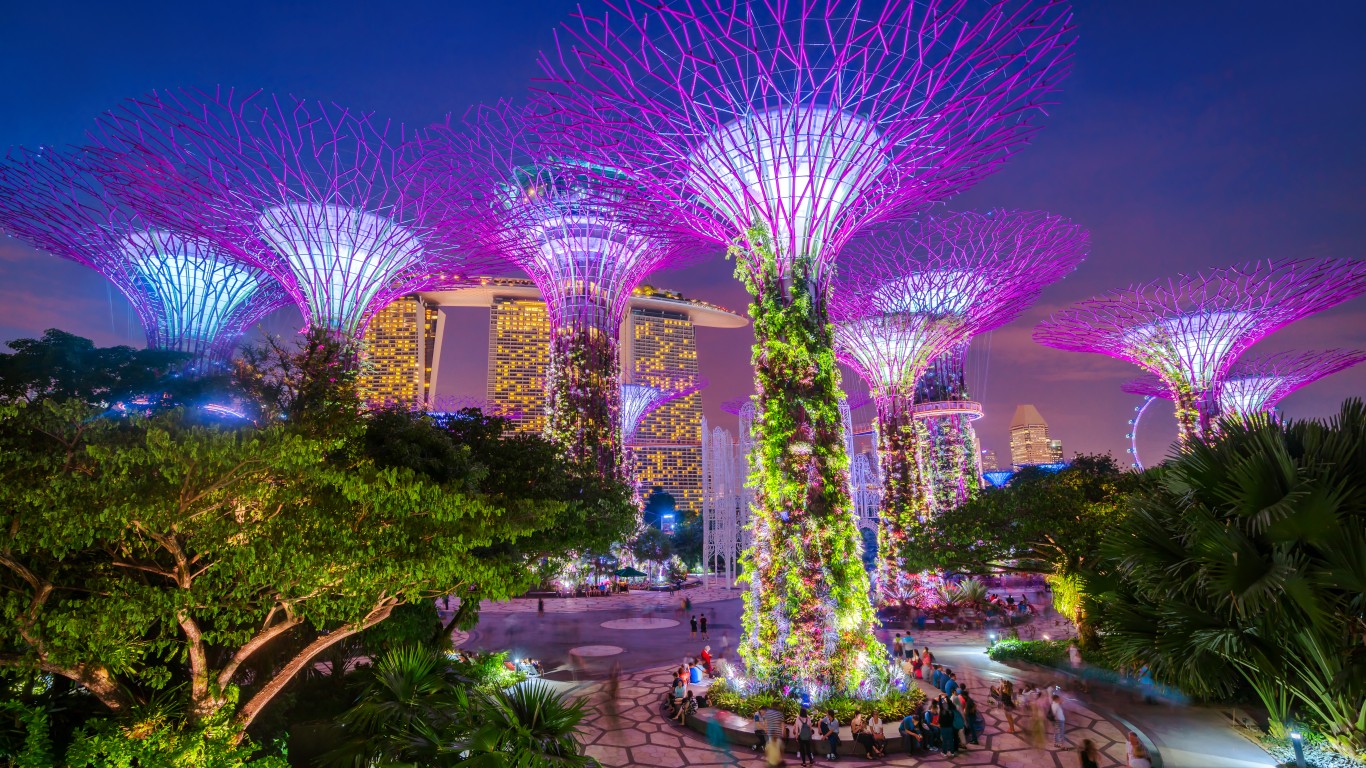 24/7 Wall St.
24/7 Wall St.